Details of the Target
General Information of Target
Target Site Mutations in Different Cell Lines
Probe(s) Labeling This Target
ABPP Probe
| Probe name | Structure | Binding Site(Ratio) | Interaction ID | Ref | |
|---|---|---|---|---|---|
|
m-APA Probe Info |
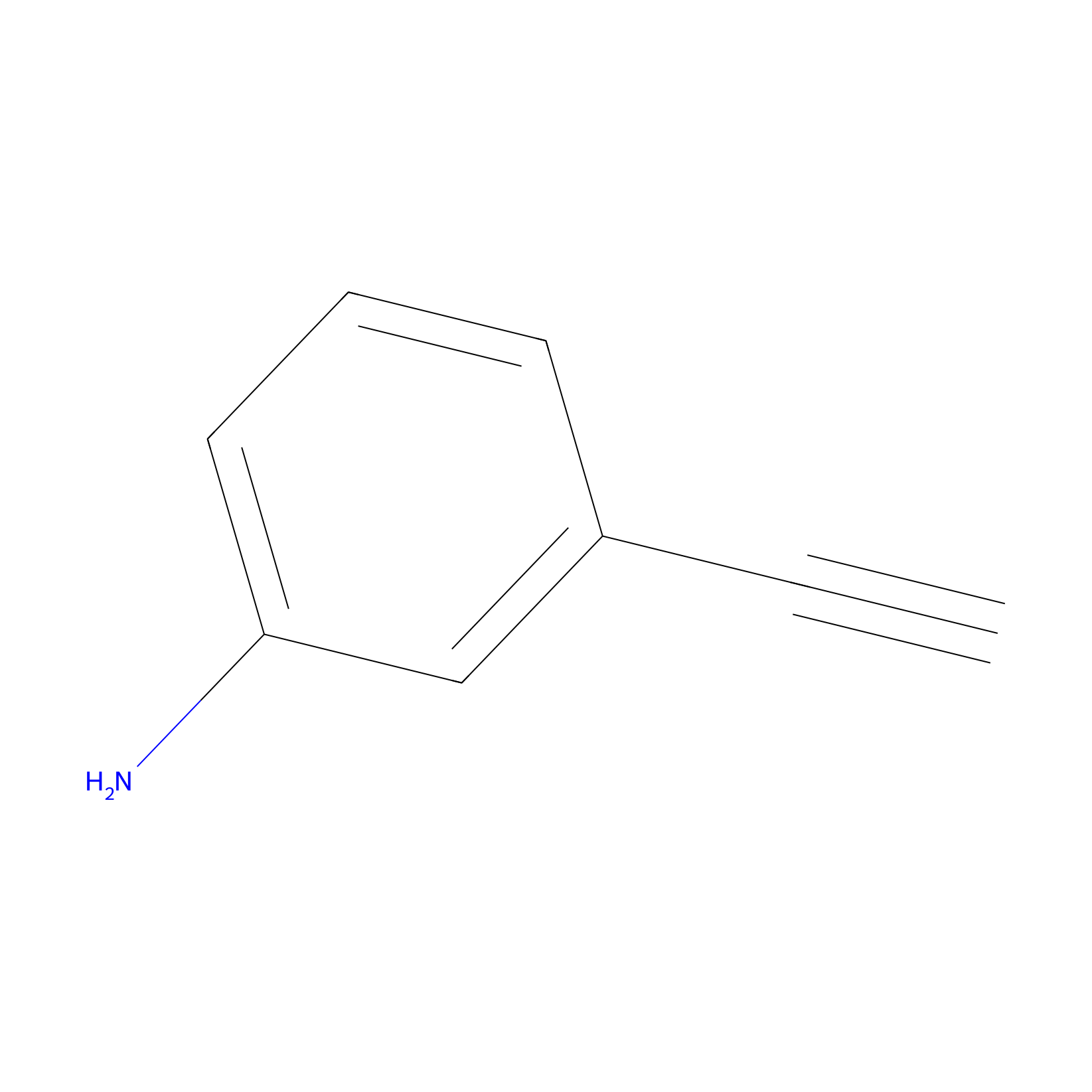 |
15.00 | LDD0402 | [1] | |
|
A-EBA Probe Info |
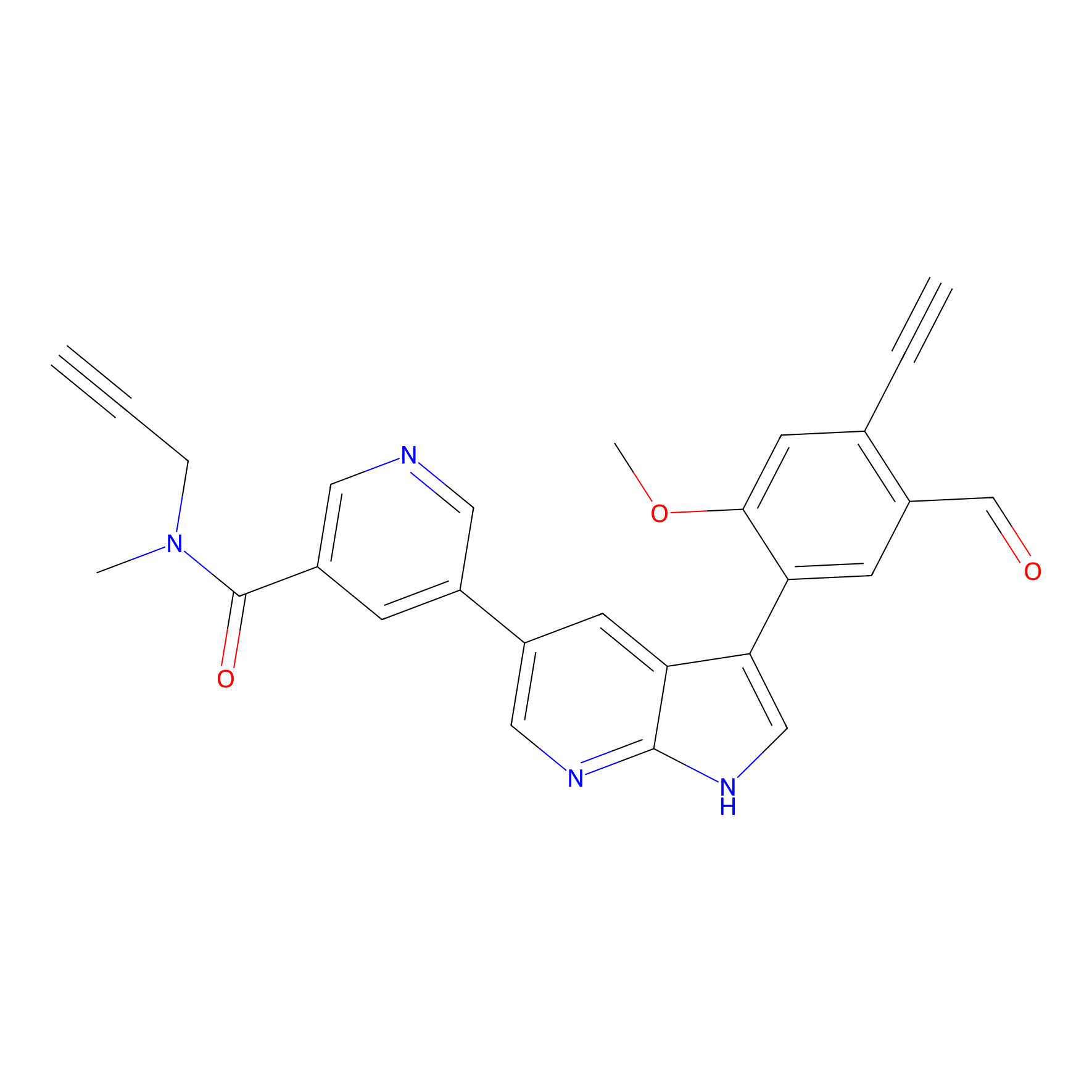 |
3.85 | LDD0215 | [2] | |
|
CY-1 Probe Info |
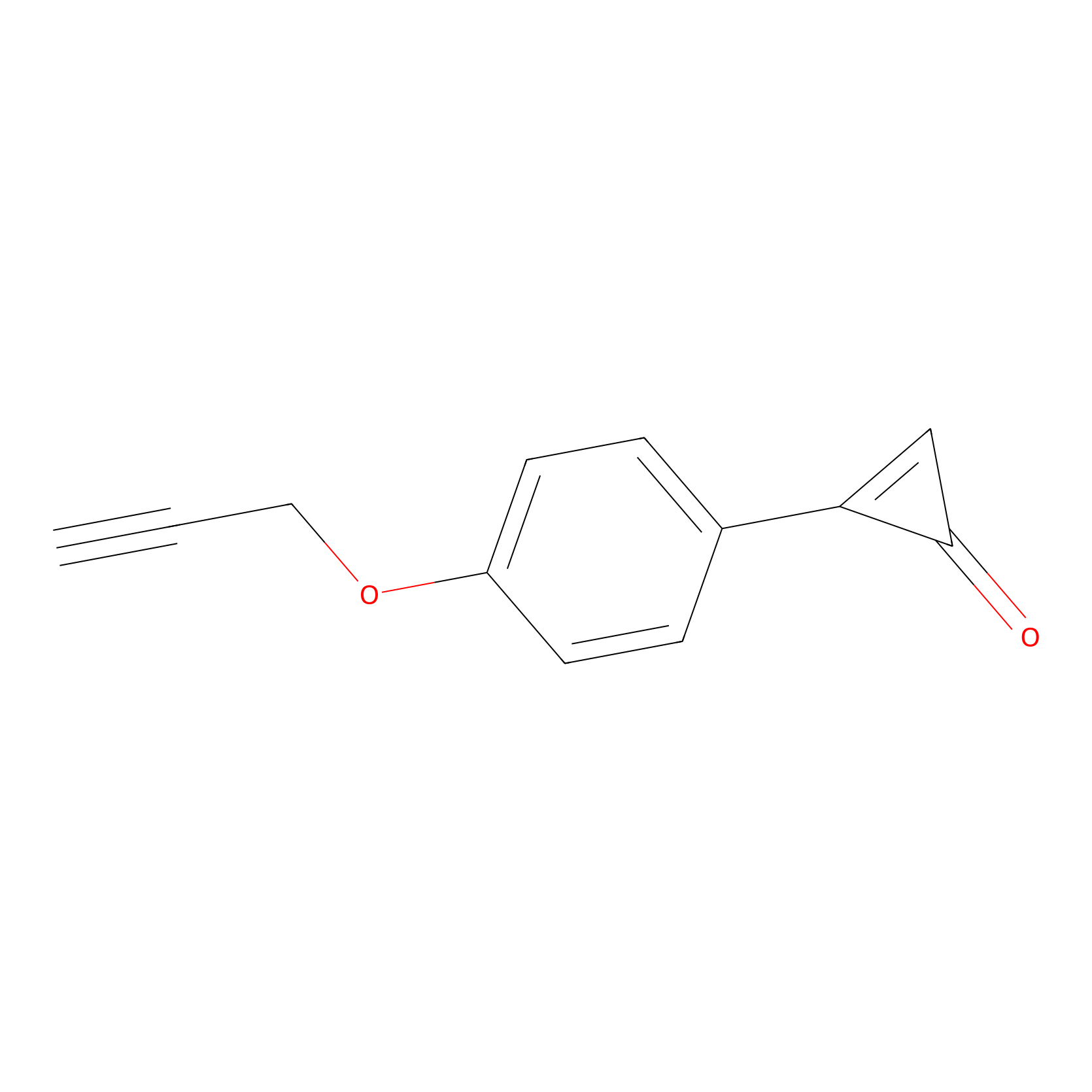 |
100.00 | LDD0243 | [3] | |
|
CY4 Probe Info |
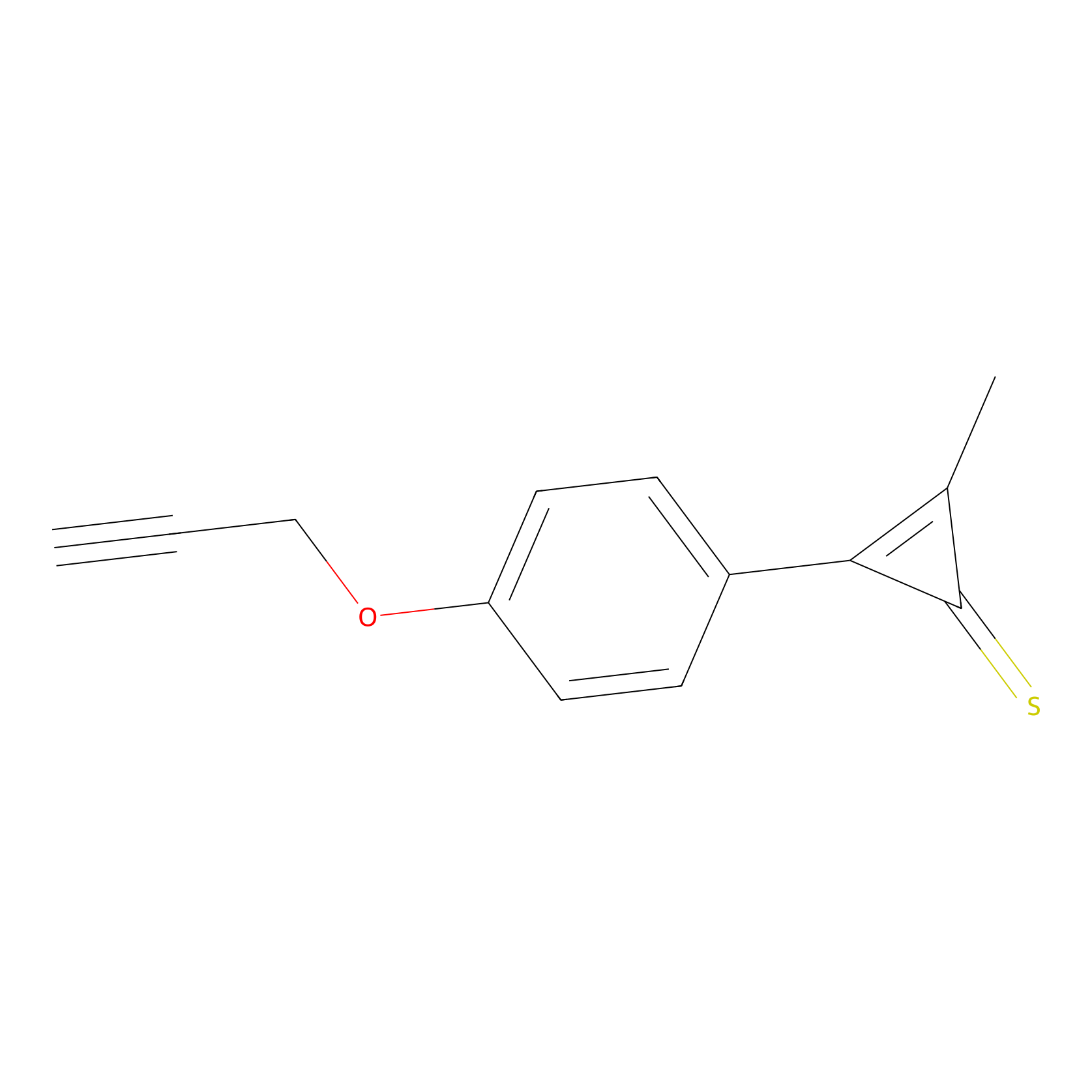 |
100.00 | LDD0244 | [3] | |
|
W1 Probe Info |
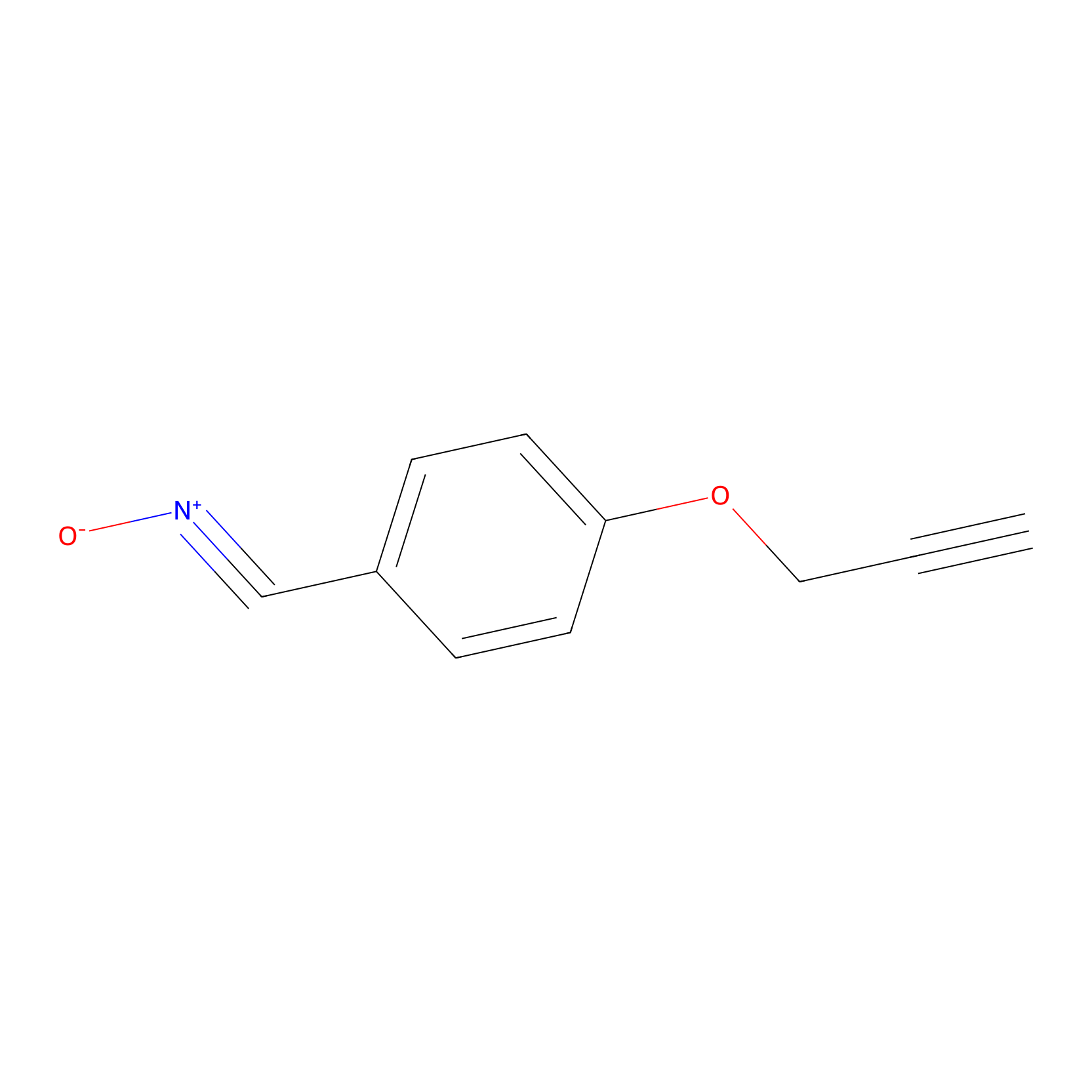 |
17.09 | LDD0235 | [4] | |
|
TH211 Probe Info |
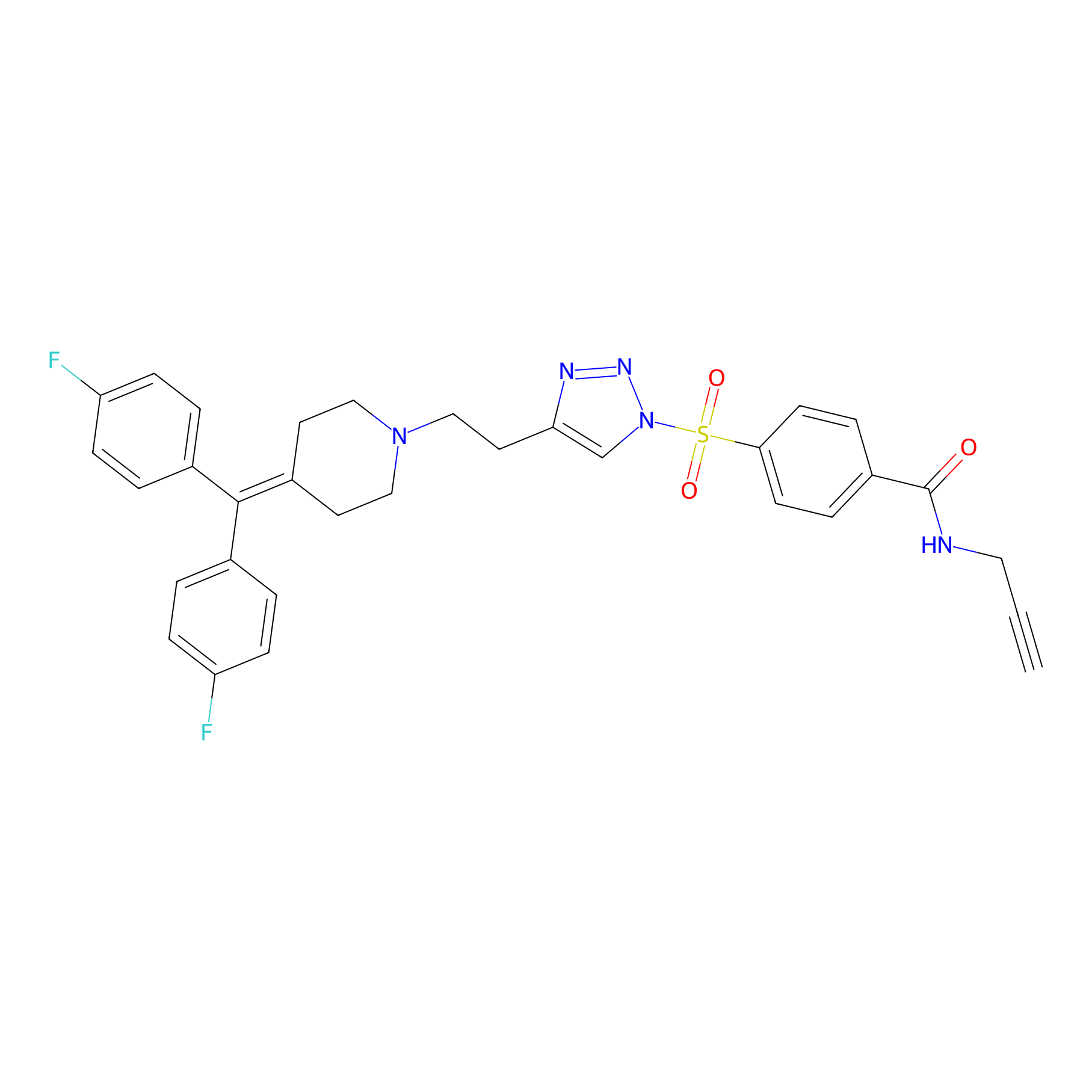 |
Y200(5.47) | LDD0257 | [5] | |
|
YN-1 Probe Info |
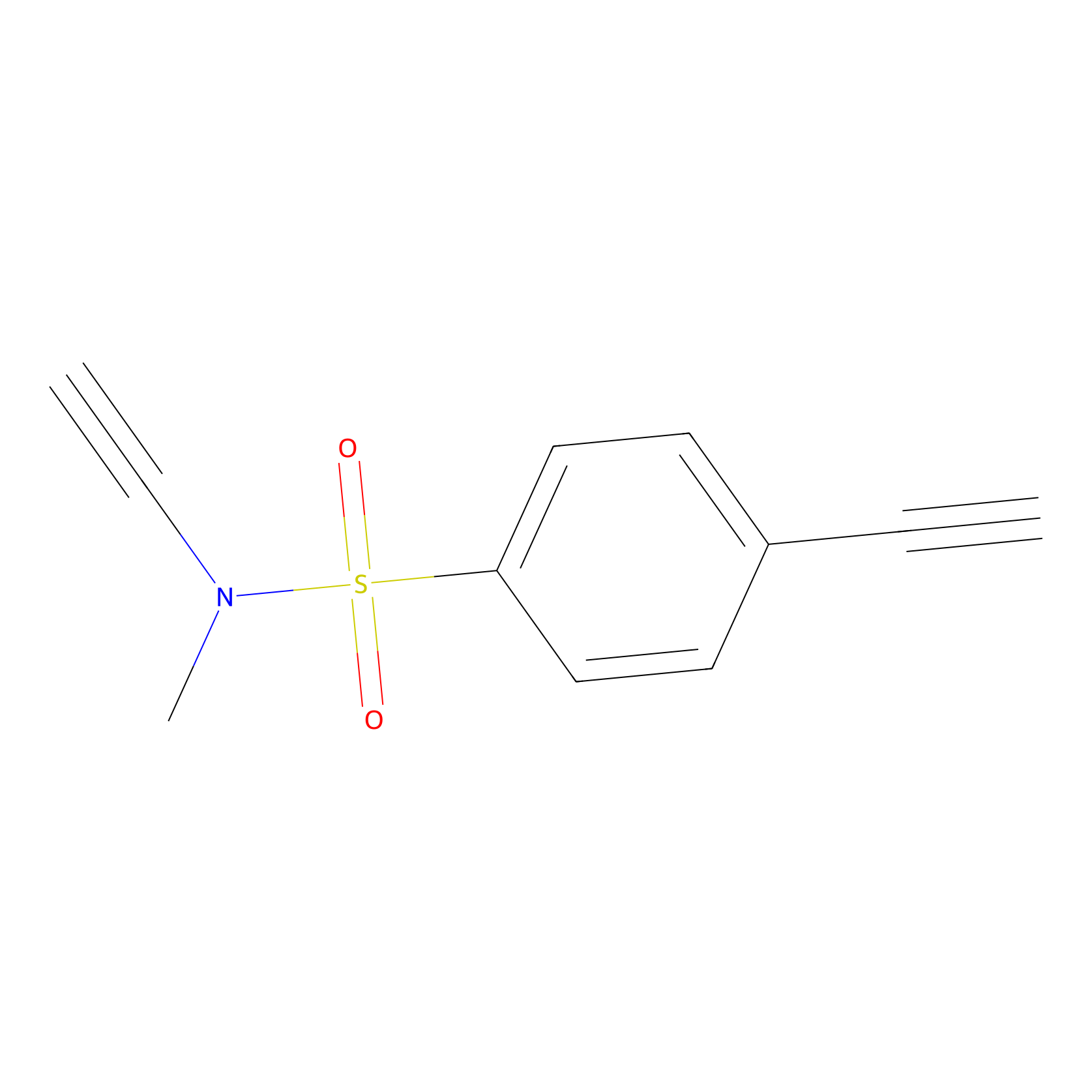 |
100.00 | LDD0444 | [6] | |
|
STPyne Probe Info |
 |
K191(5.77); K320(10.00); K50(4.20) | LDD0277 | [7] | |
|
BTD Probe Info |
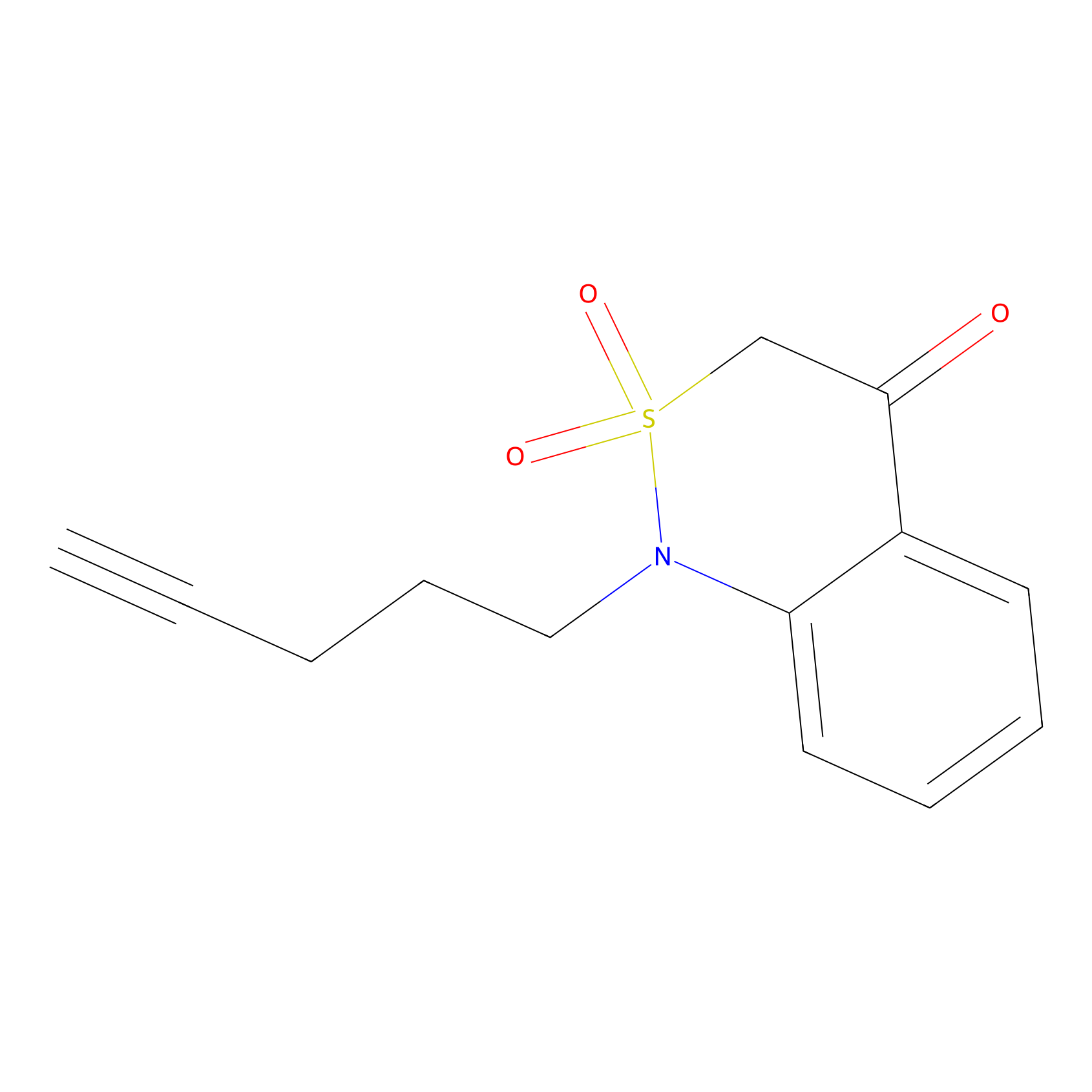 |
C284(1.30) | LDD1700 | [8] | |
|
EA-probe Probe Info |
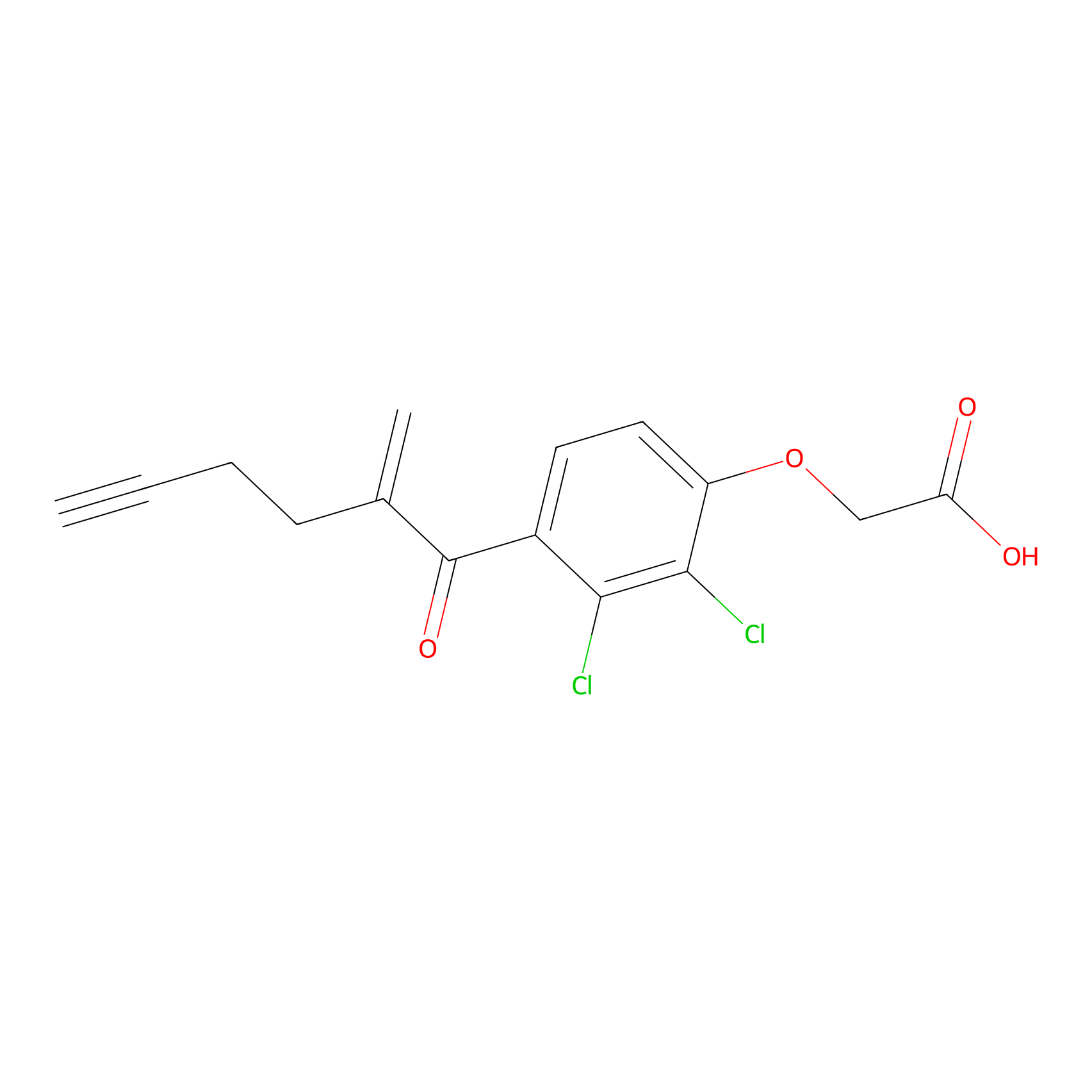 |
N.A. | LDD0440 | [9] | |
|
HHS-482 Probe Info |
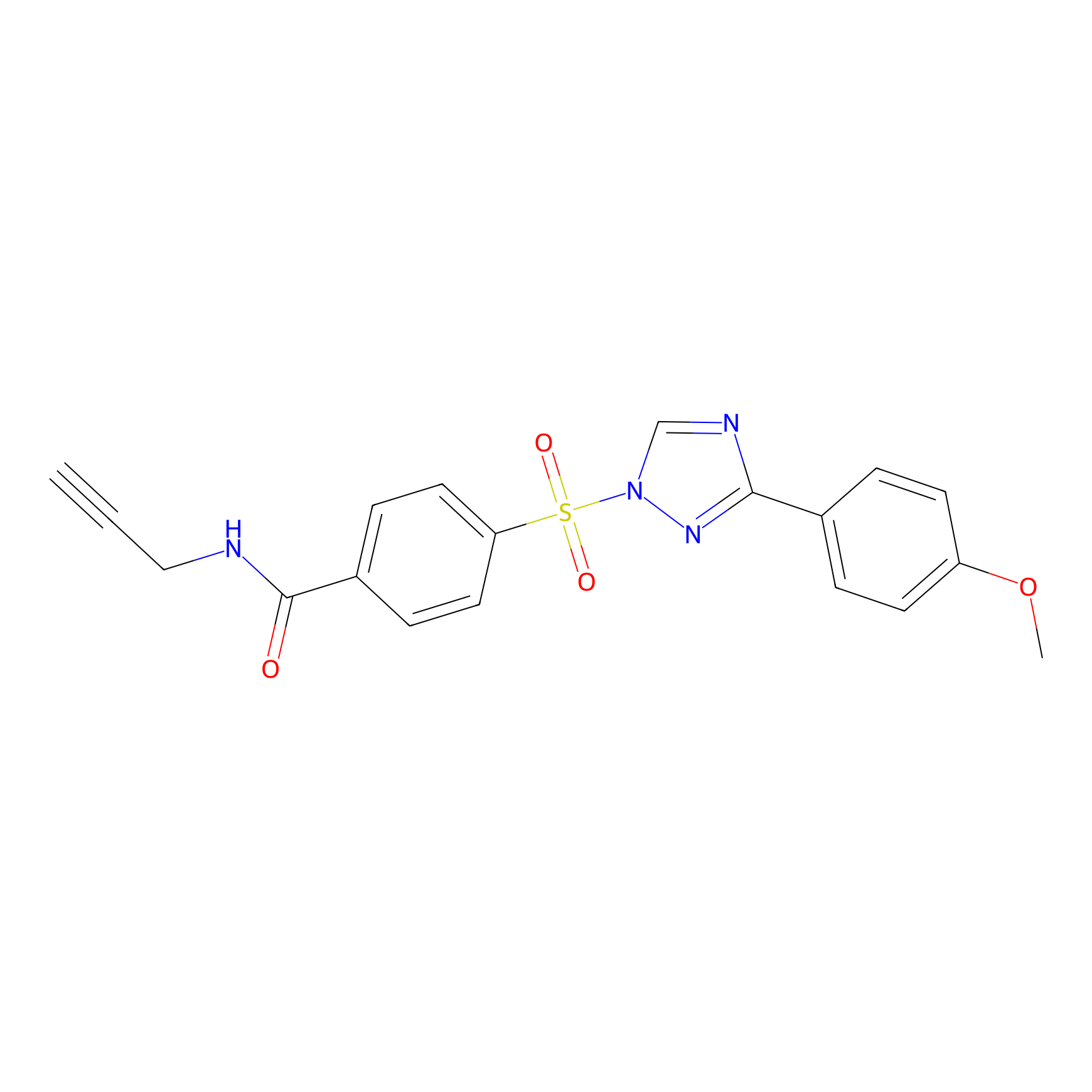 |
Y200(0.16) | LDD0291 | [10] | |
|
HHS-465 Probe Info |
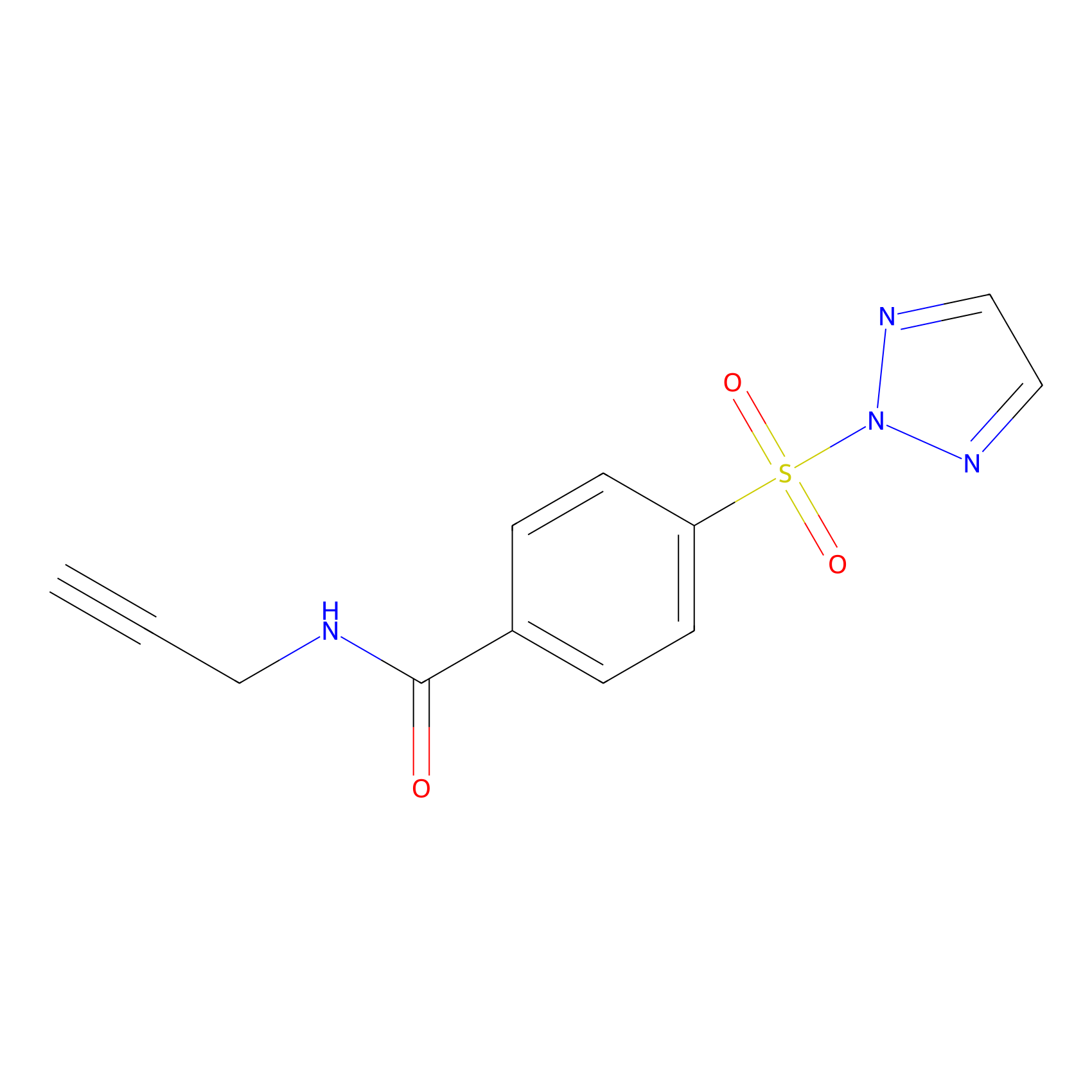 |
Y26(8.96) | LDD2237 | [11] | |
|
Acrolein Probe Info |
 |
H213(0.00); H212(0.00) | LDD0221 | [12] | |
|
5E-2FA Probe Info |
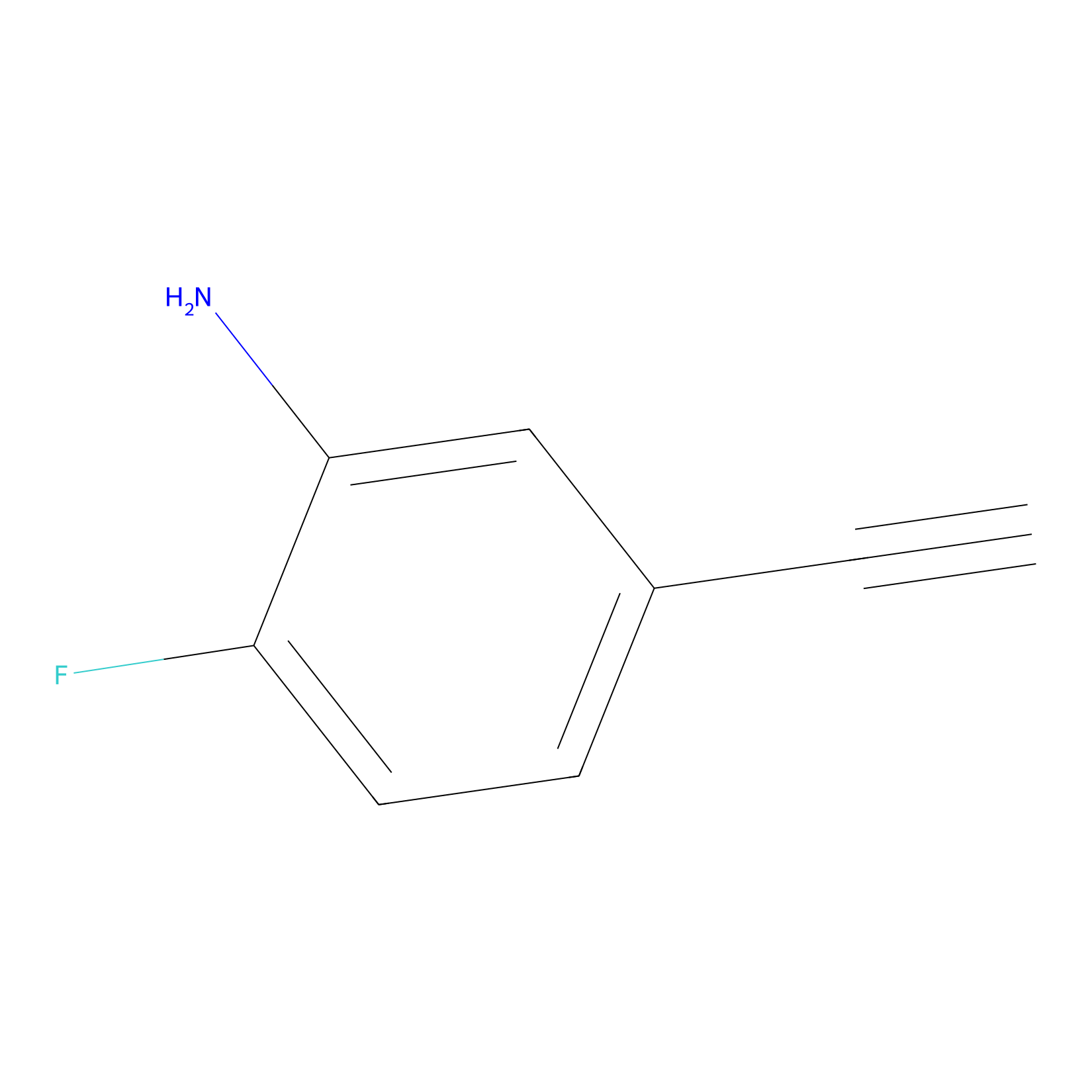 |
H59(0.00); H212(0.00); H201(0.00); H170(0.00) | LDD2235 | [13] | |
|
ATP probe Probe Info |
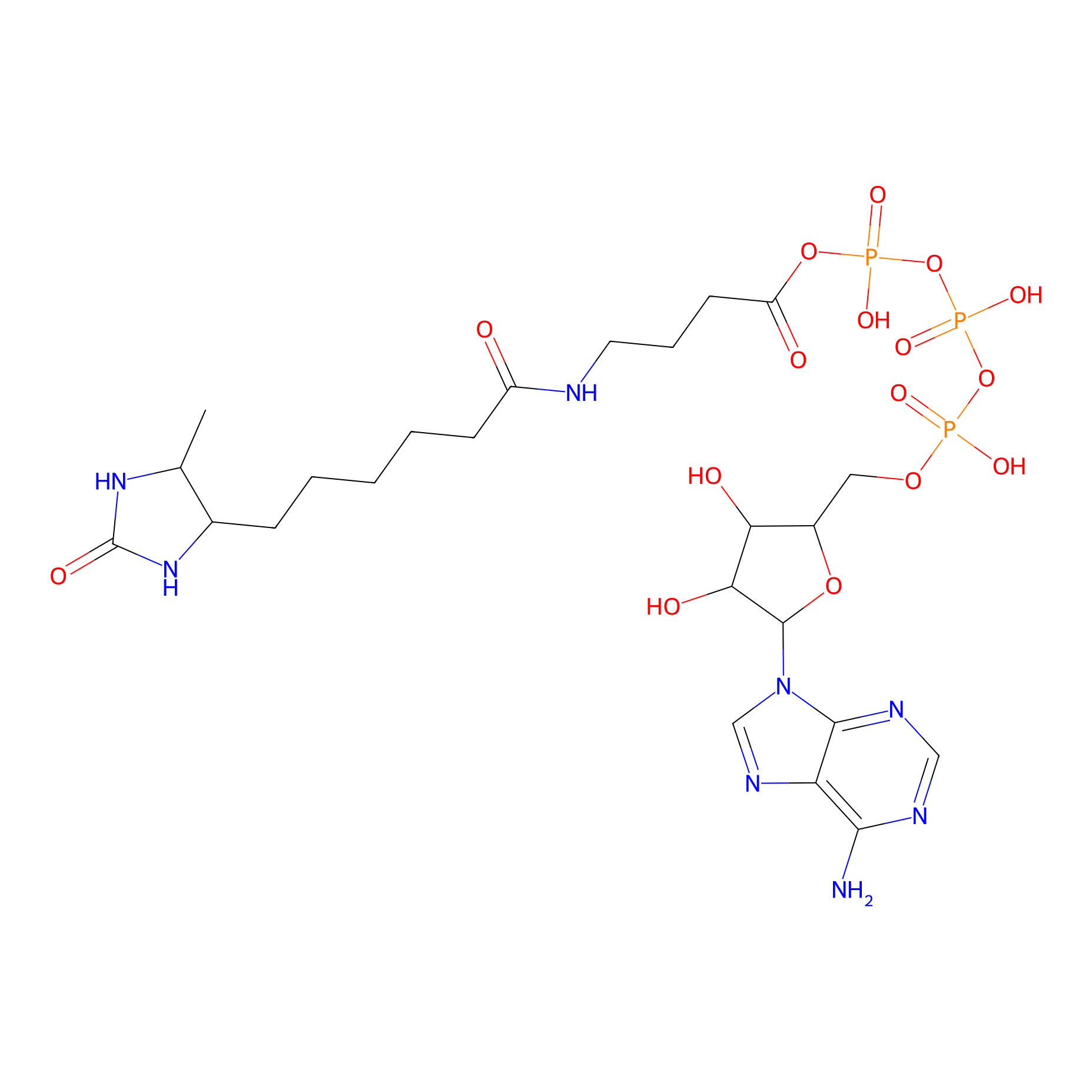 |
K50(0.00); K320(0.00); K323(0.00); K104(0.00) | LDD0199 | [14] | |
|
IA-alkyne Probe Info |
 |
N.A. | LDD0032 | [15] | |
|
IPIAA_H Probe Info |
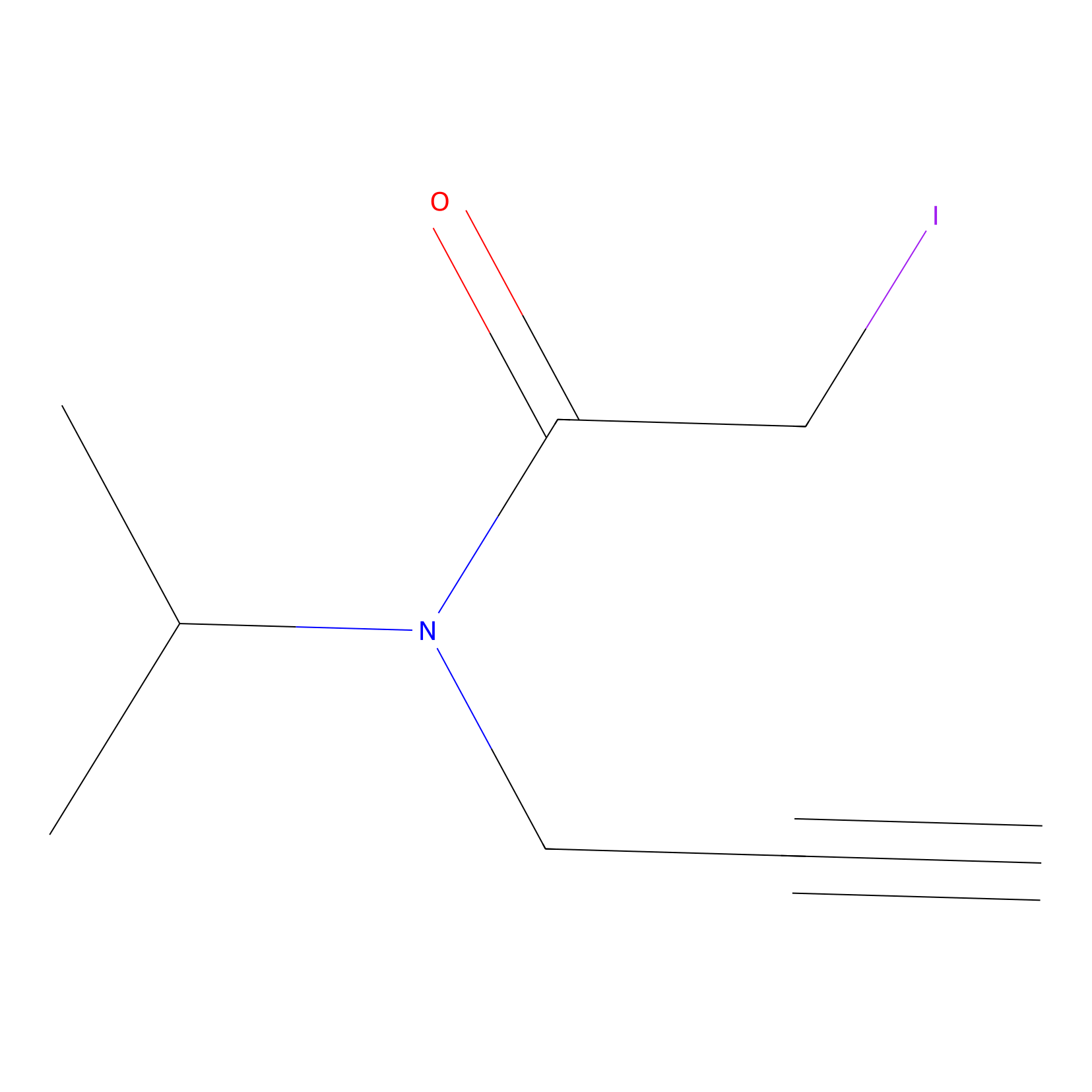 |
N.A. | LDD0030 | [16] | |
|
IPIAA_L Probe Info |
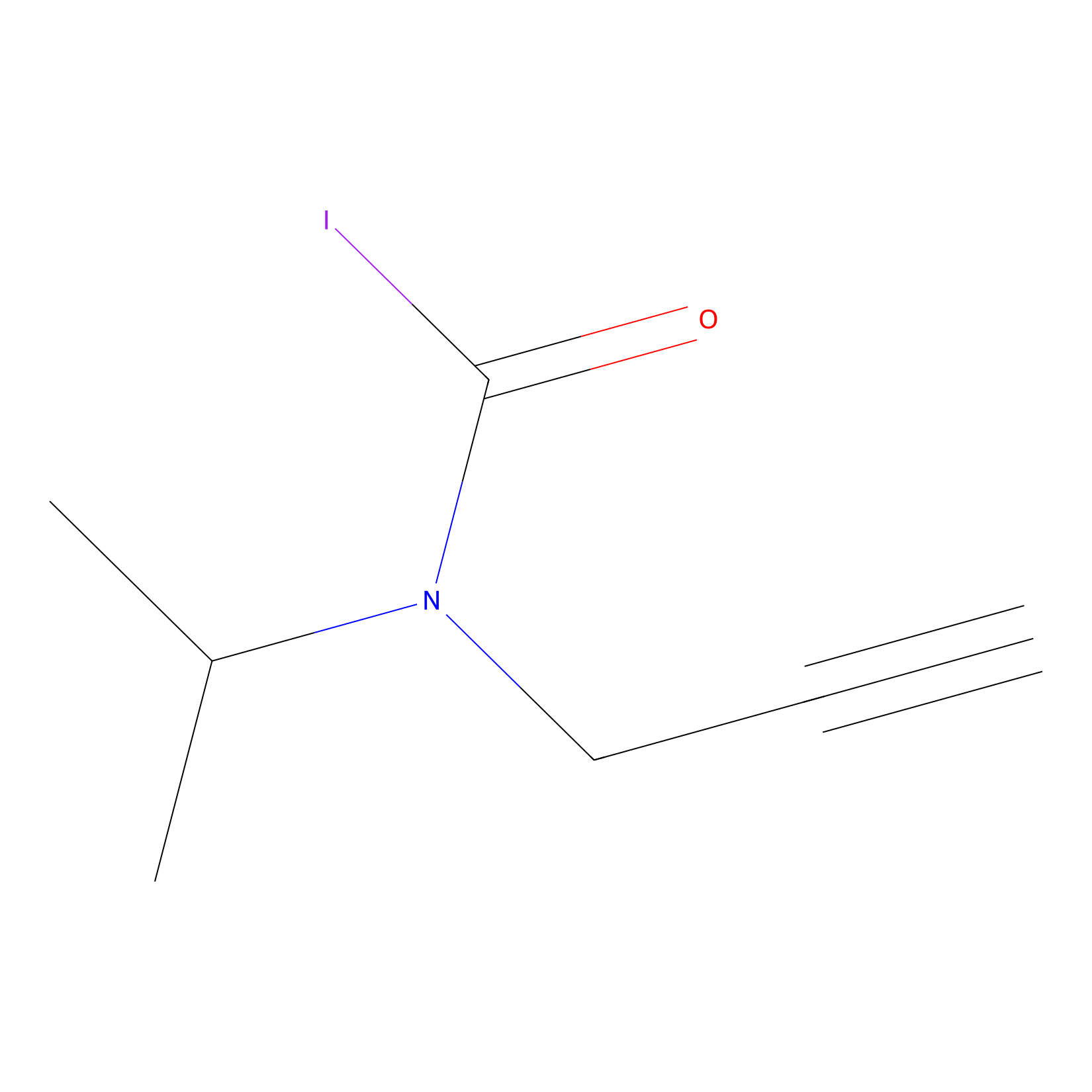 |
N.A. | LDD0031 | [16] | |
|
ATP probe Probe Info |
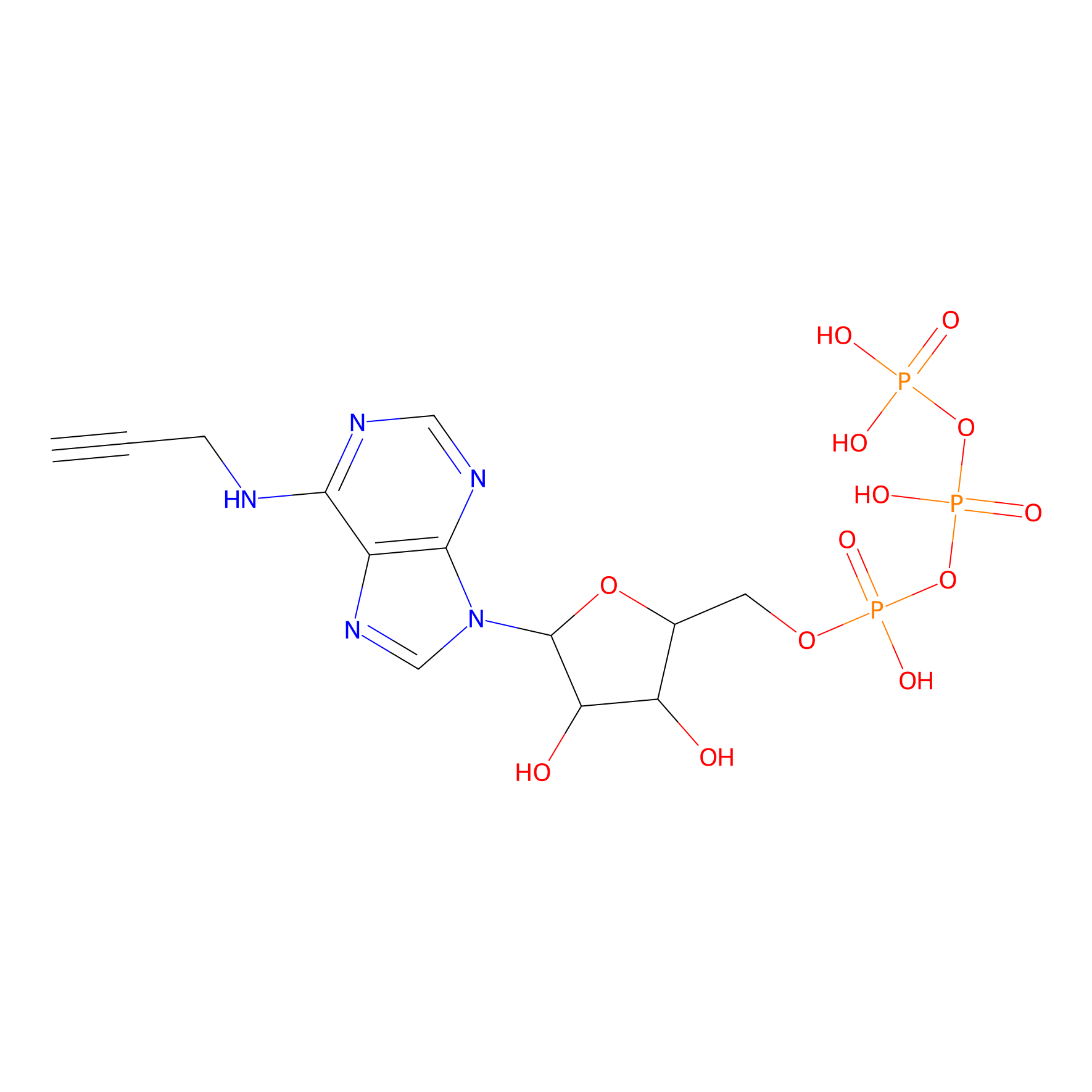 |
N.A. | LDD0035 | [17] | |
|
IPM Probe Info |
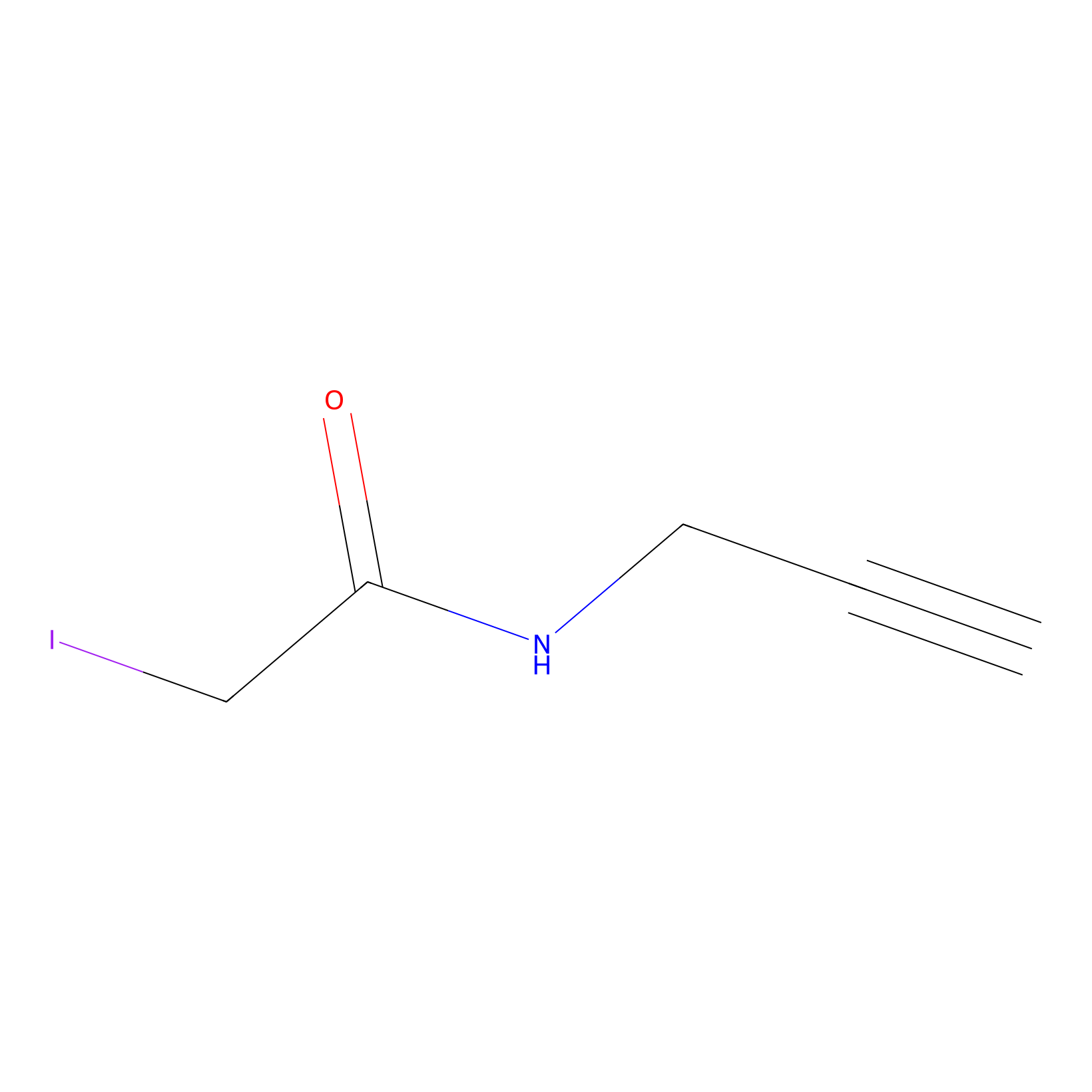 |
C284(0.00); C13(0.00) | LDD0025 | [18] | |
|
TFBX Probe Info |
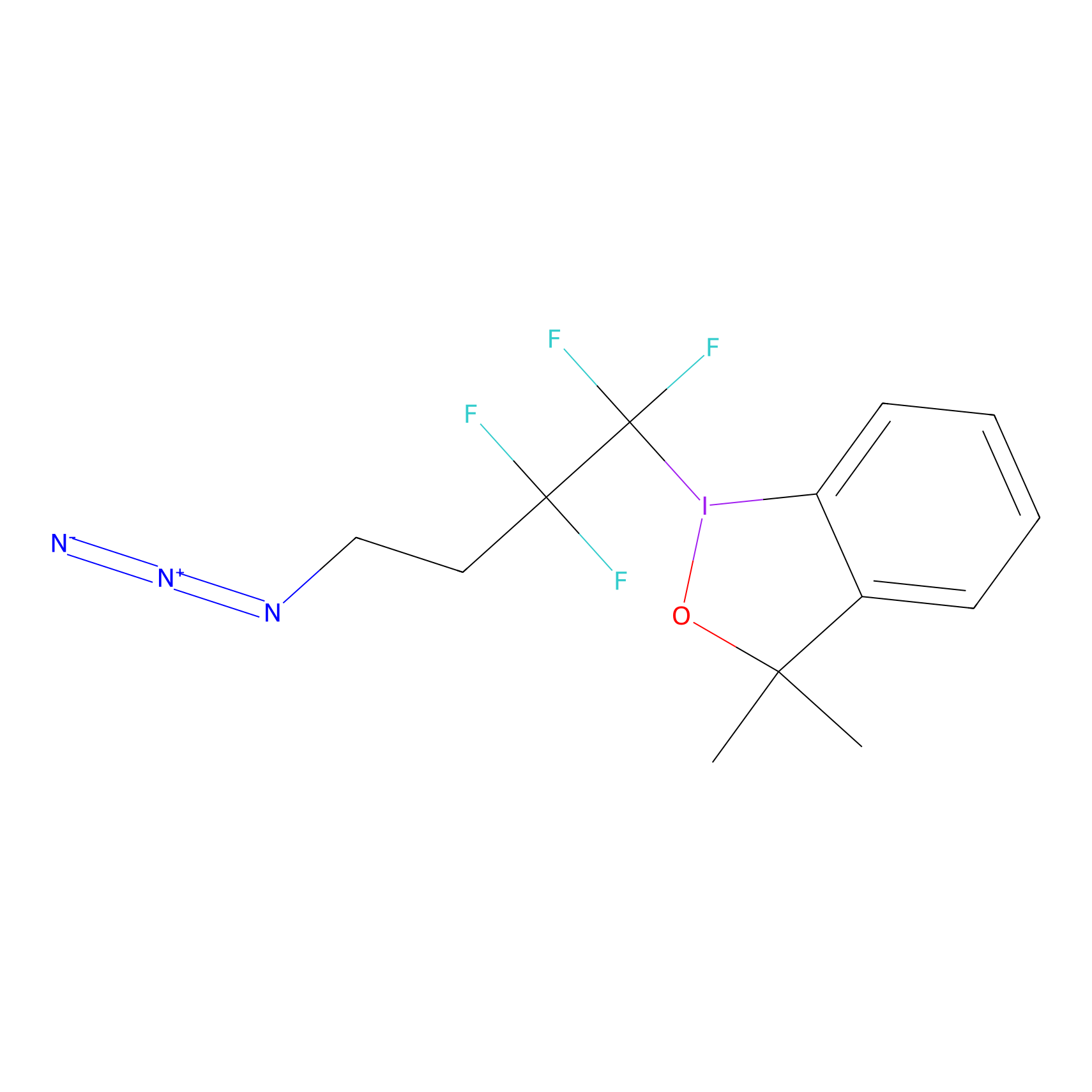 |
N.A. | LDD0027 | [18] | |
|
1d-yne Probe Info |
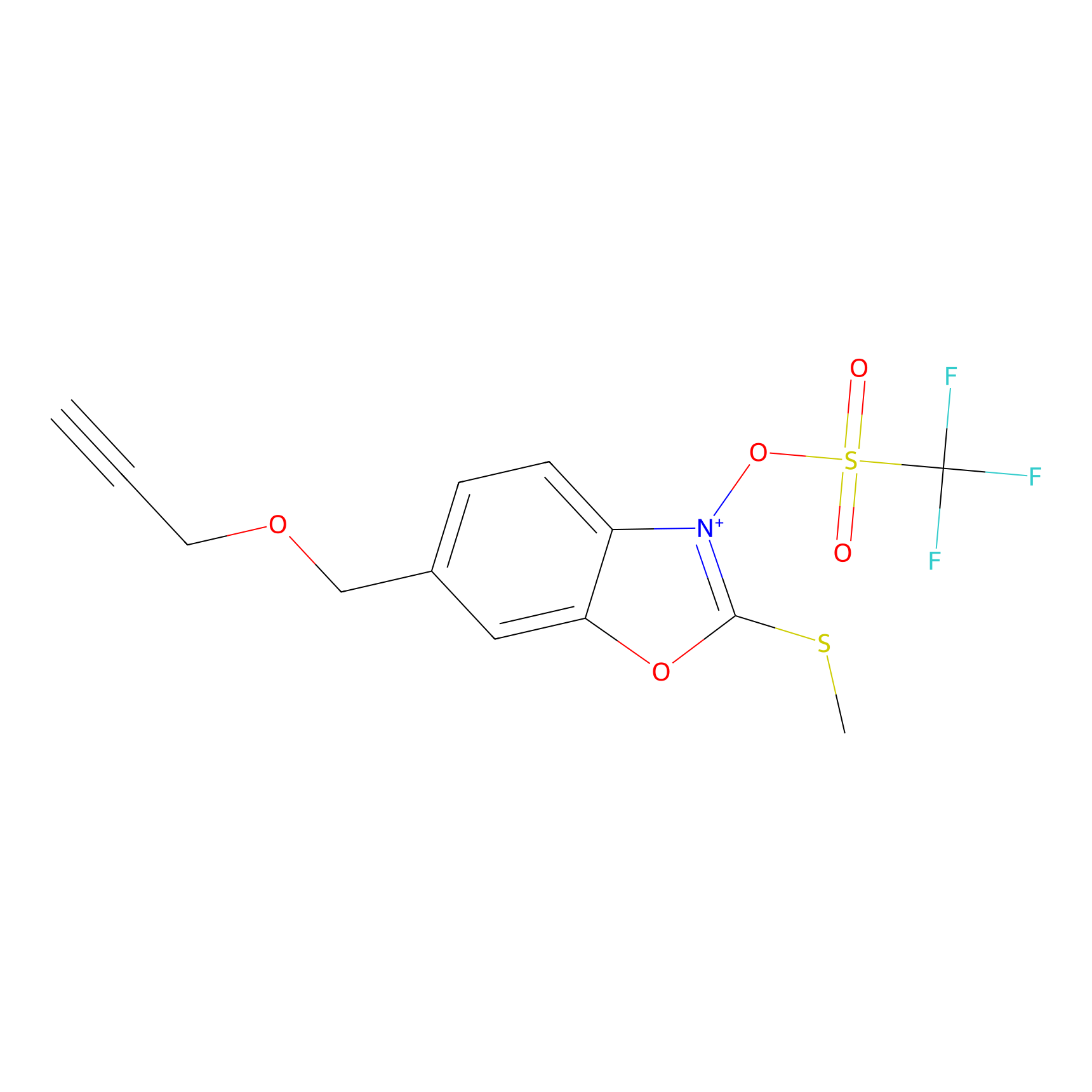 |
K191(0.00); K104(0.00) | LDD0356 | [19] | |
|
ENE Probe Info |
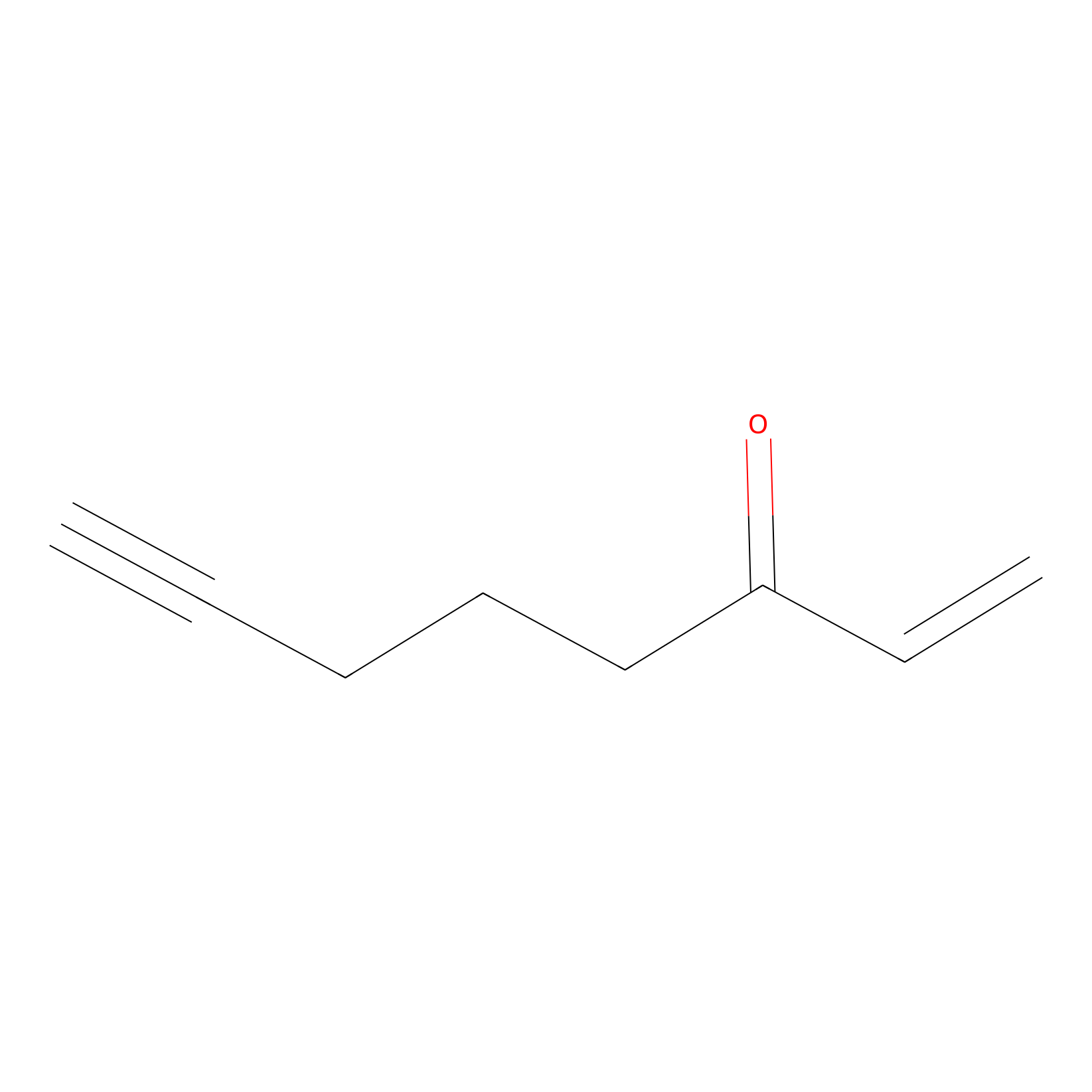 |
N.A. | LDD0006 | [20] | |
|
NHS Probe Info |
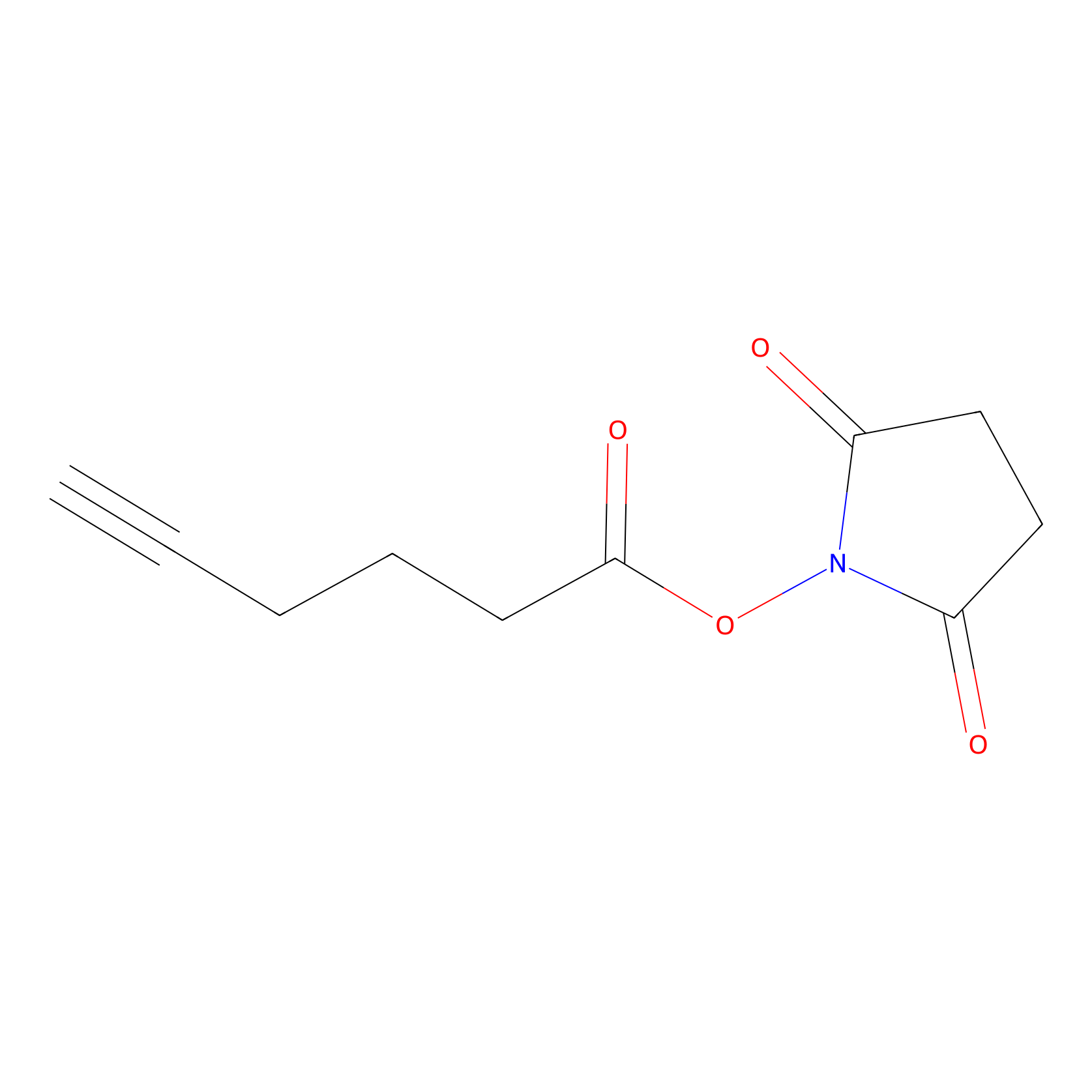 |
K191(0.00); K171(0.00); K313(0.00) | LDD0010 | [20] | |
|
SF Probe Info |
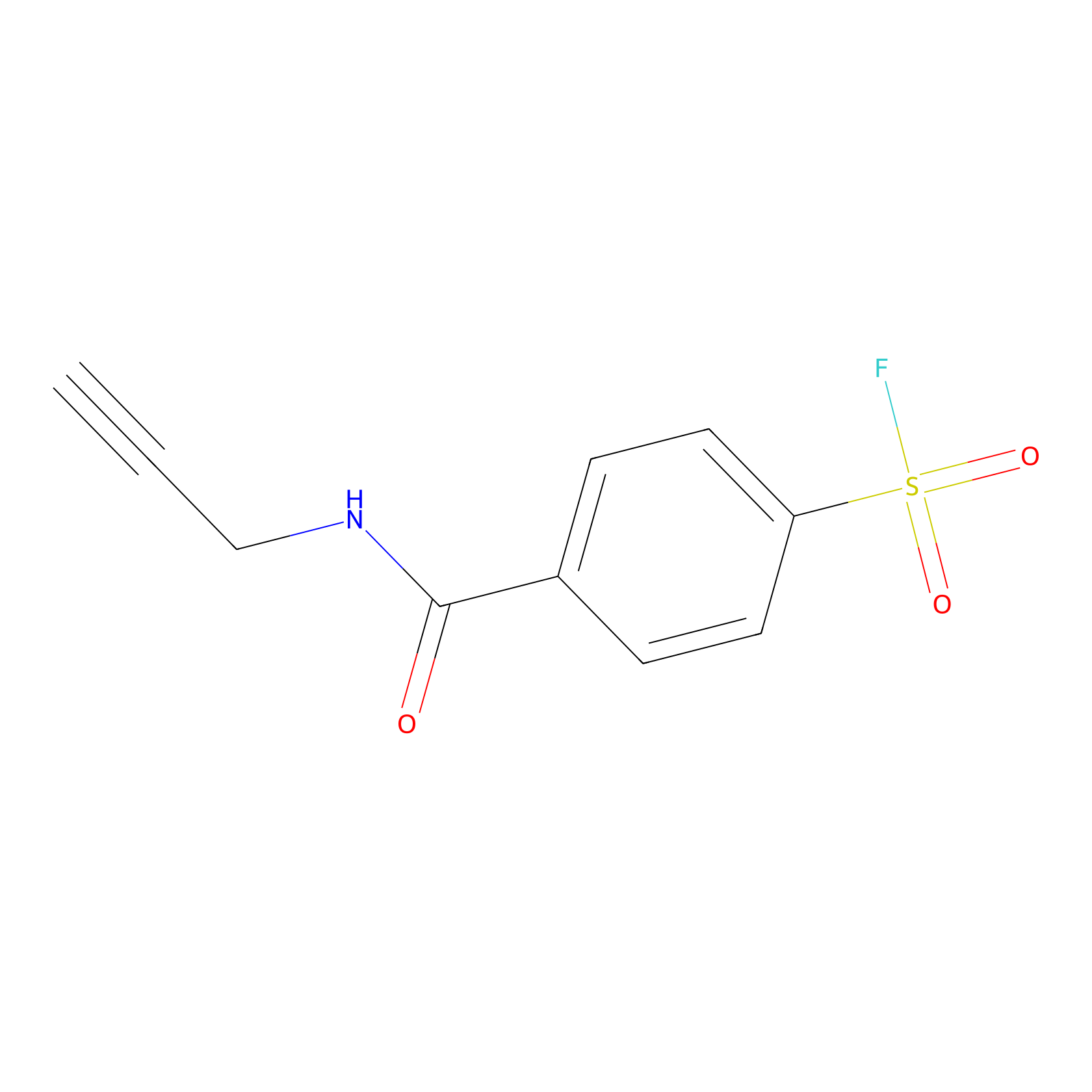 |
Y109(0.00); Y200(0.00); Y26(0.00) | LDD0028 | [21] | |
|
VSF Probe Info |
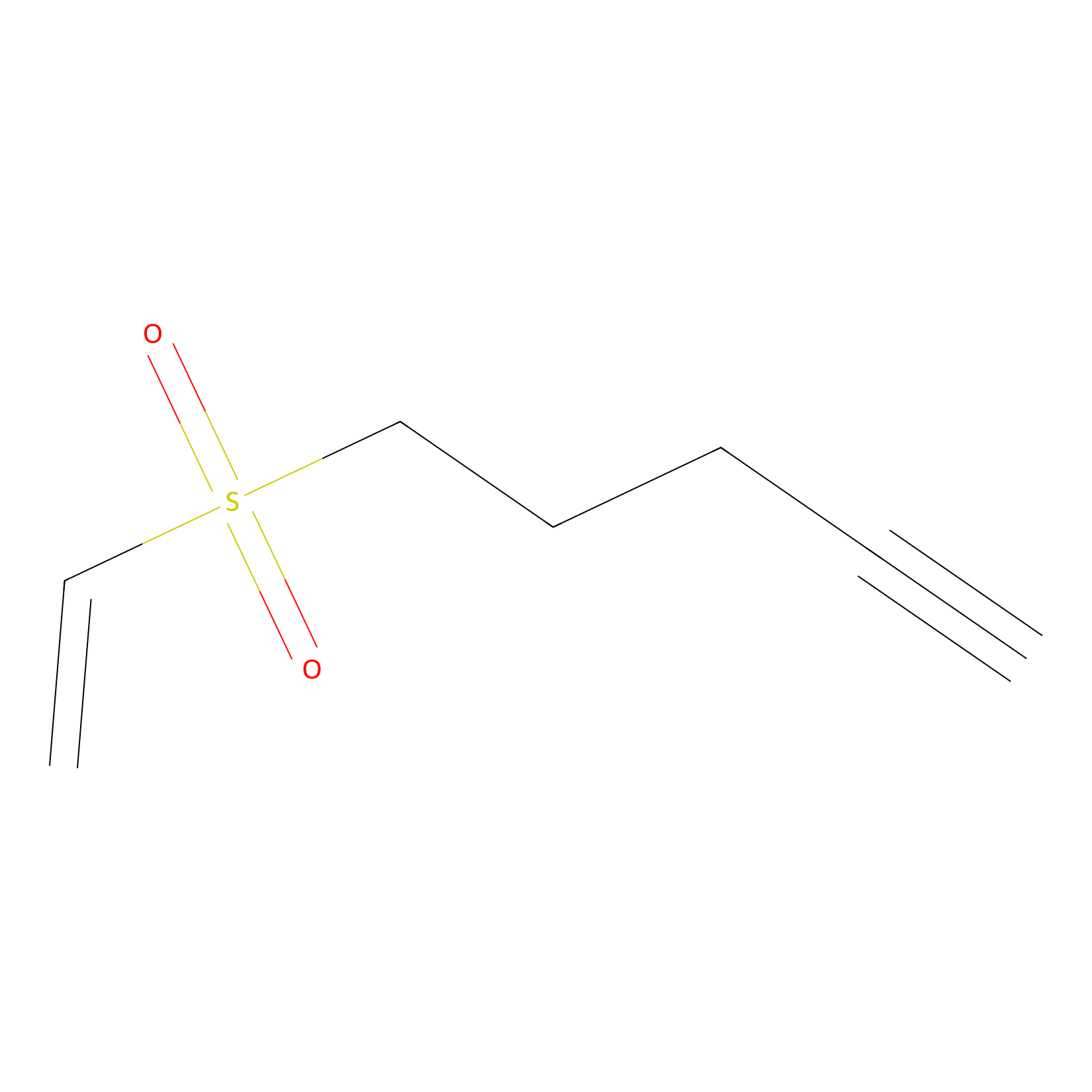 |
N.A. | LDD0007 | [20] | |
|
Phosphinate-6 Probe Info |
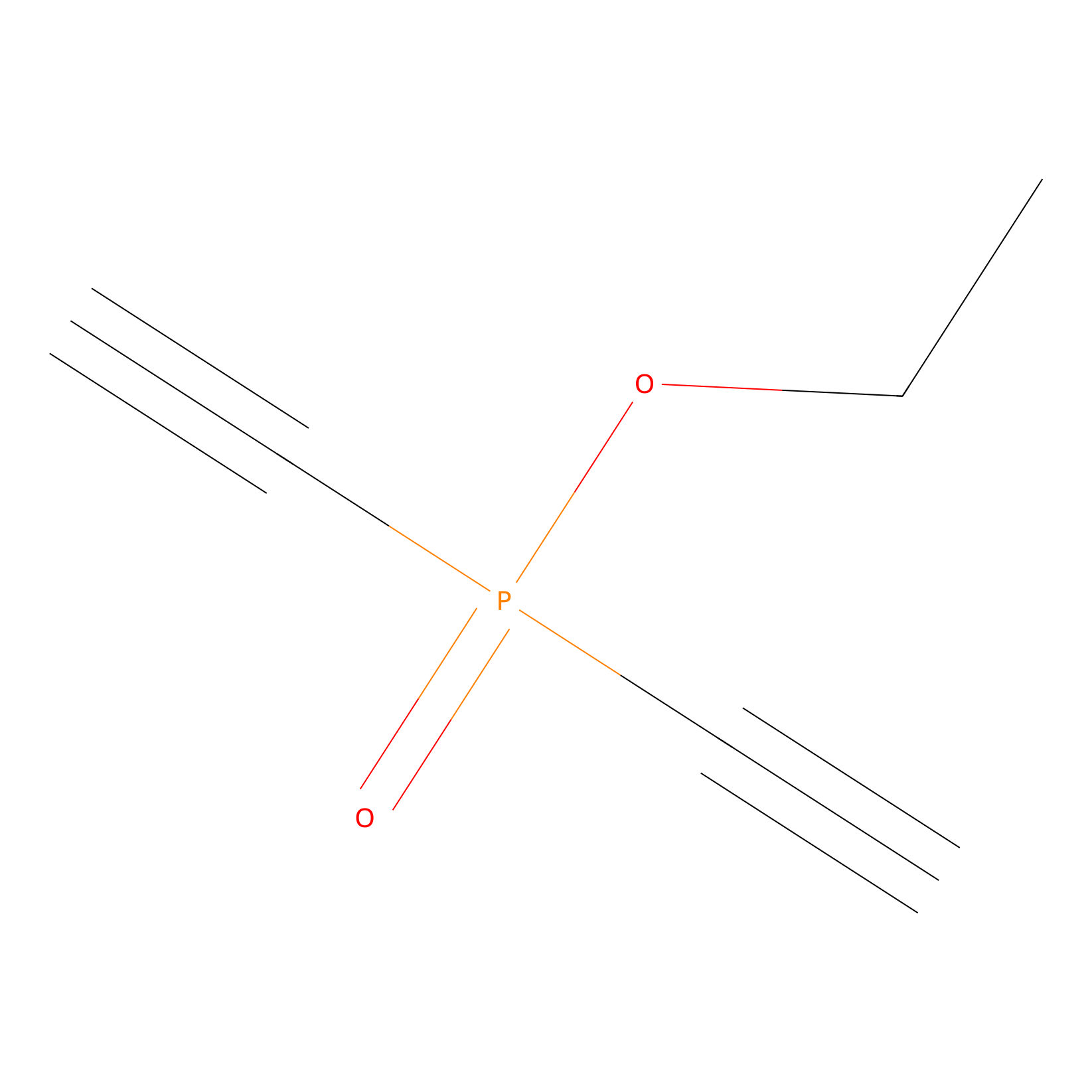 |
N.A. | LDD0018 | [22] | |
|
1c-yne Probe Info |
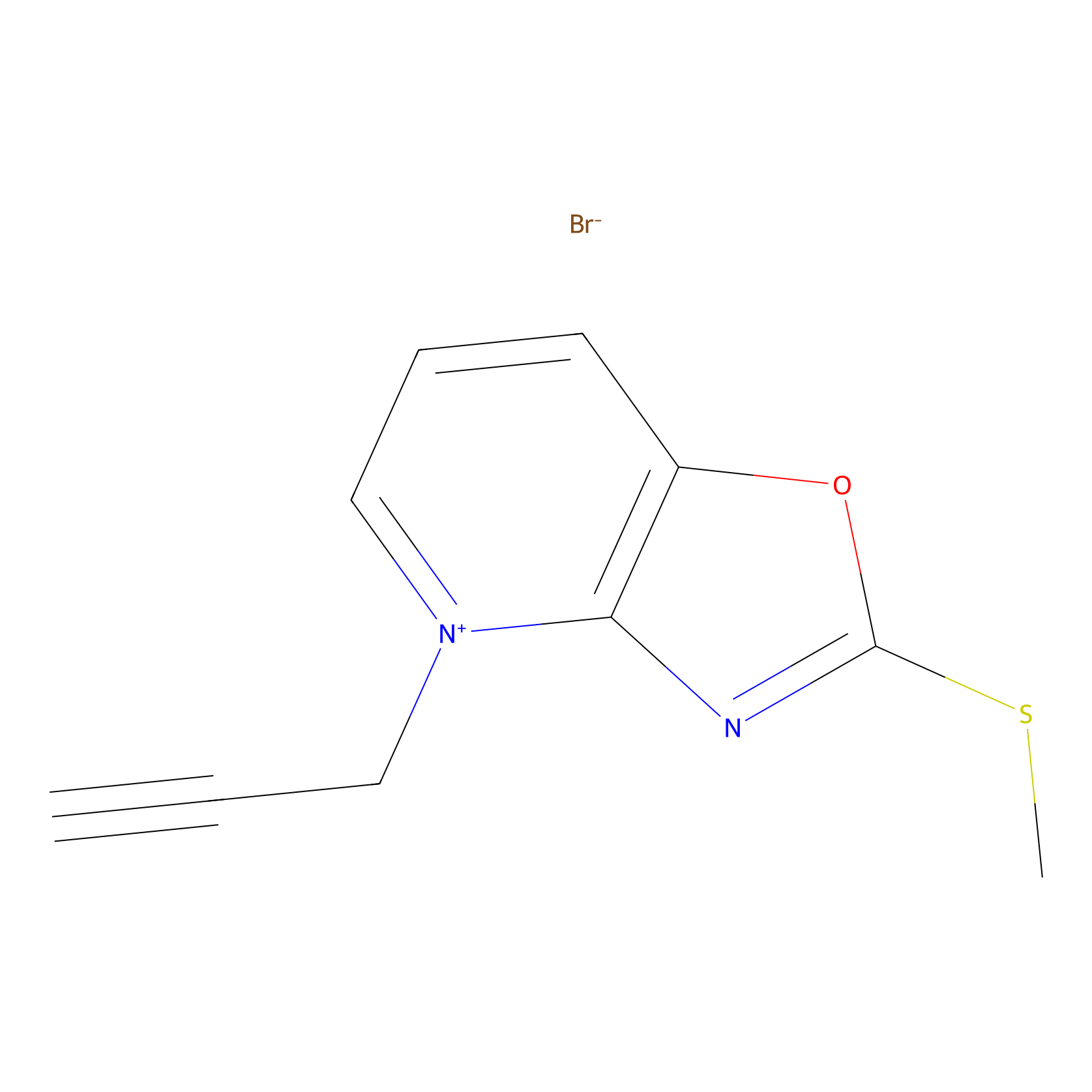 |
K171(0.00); K182(0.00); K55(0.00); K191(0.00) | LDD0228 | [19] | |
|
Crotonaldehyde Probe Info |
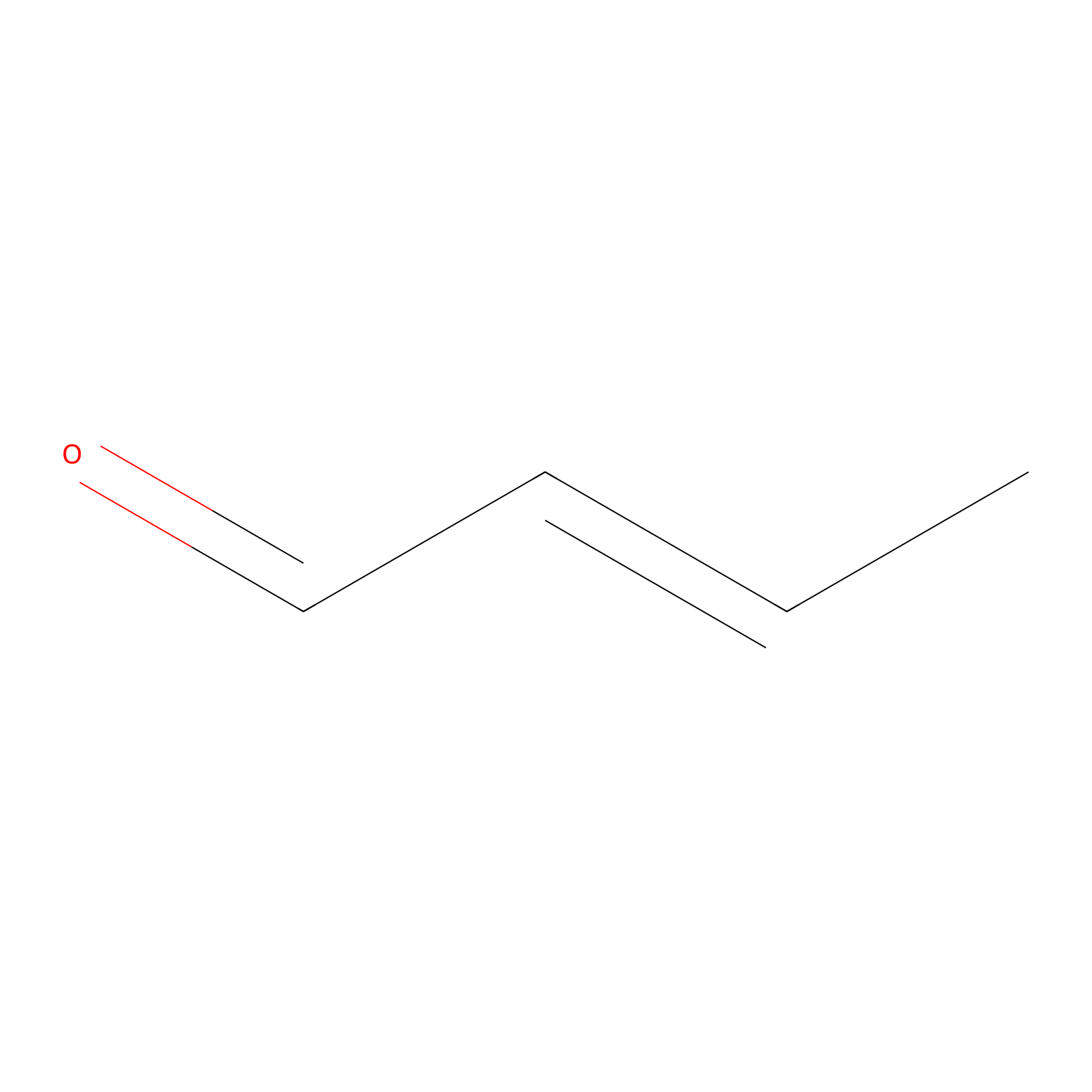 |
H213(0.00); H212(0.00); H170(0.00) | LDD0219 | [12] | |
|
AOyne Probe Info |
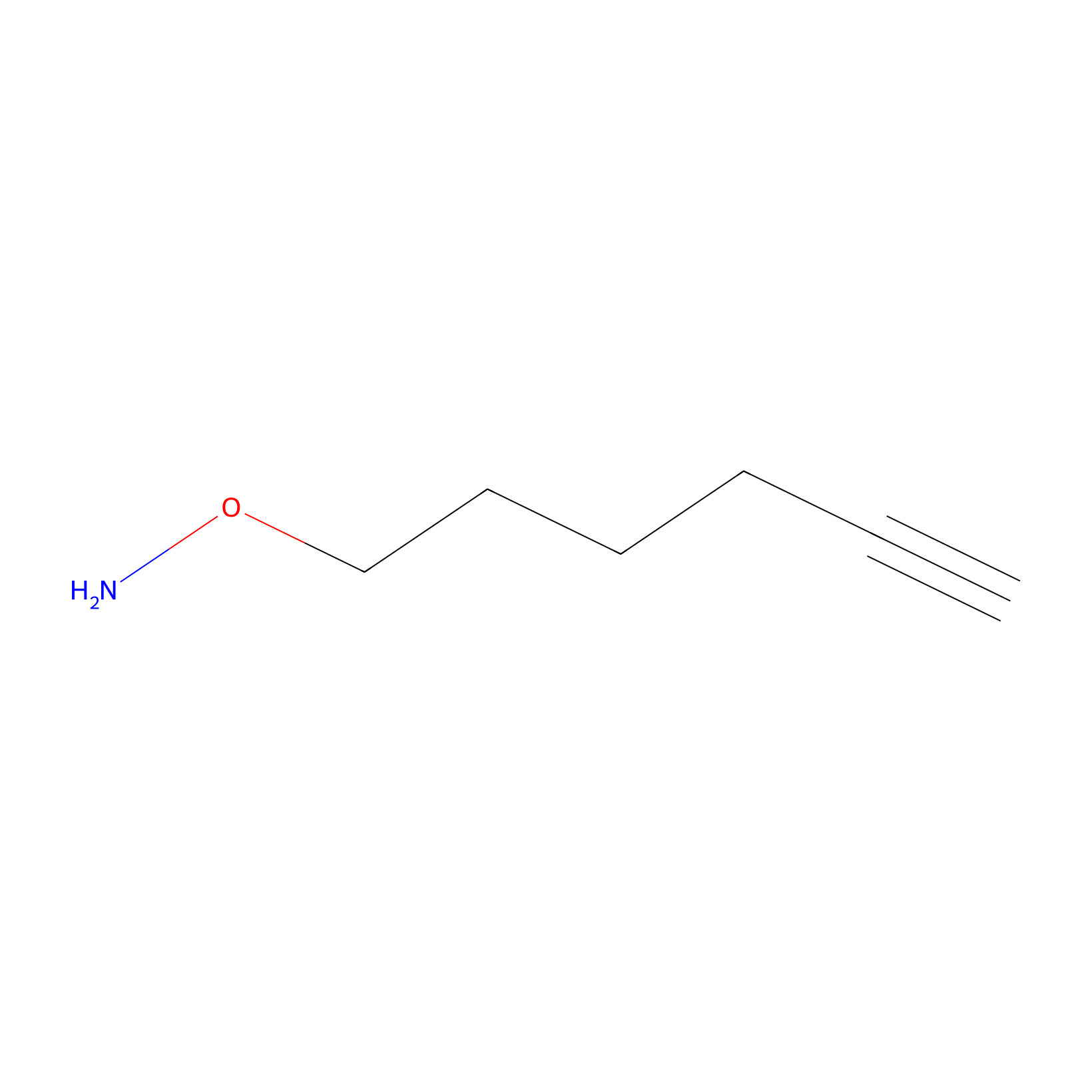 |
15.00 | LDD0443 | [23] | |
|
MPP-AC Probe Info |
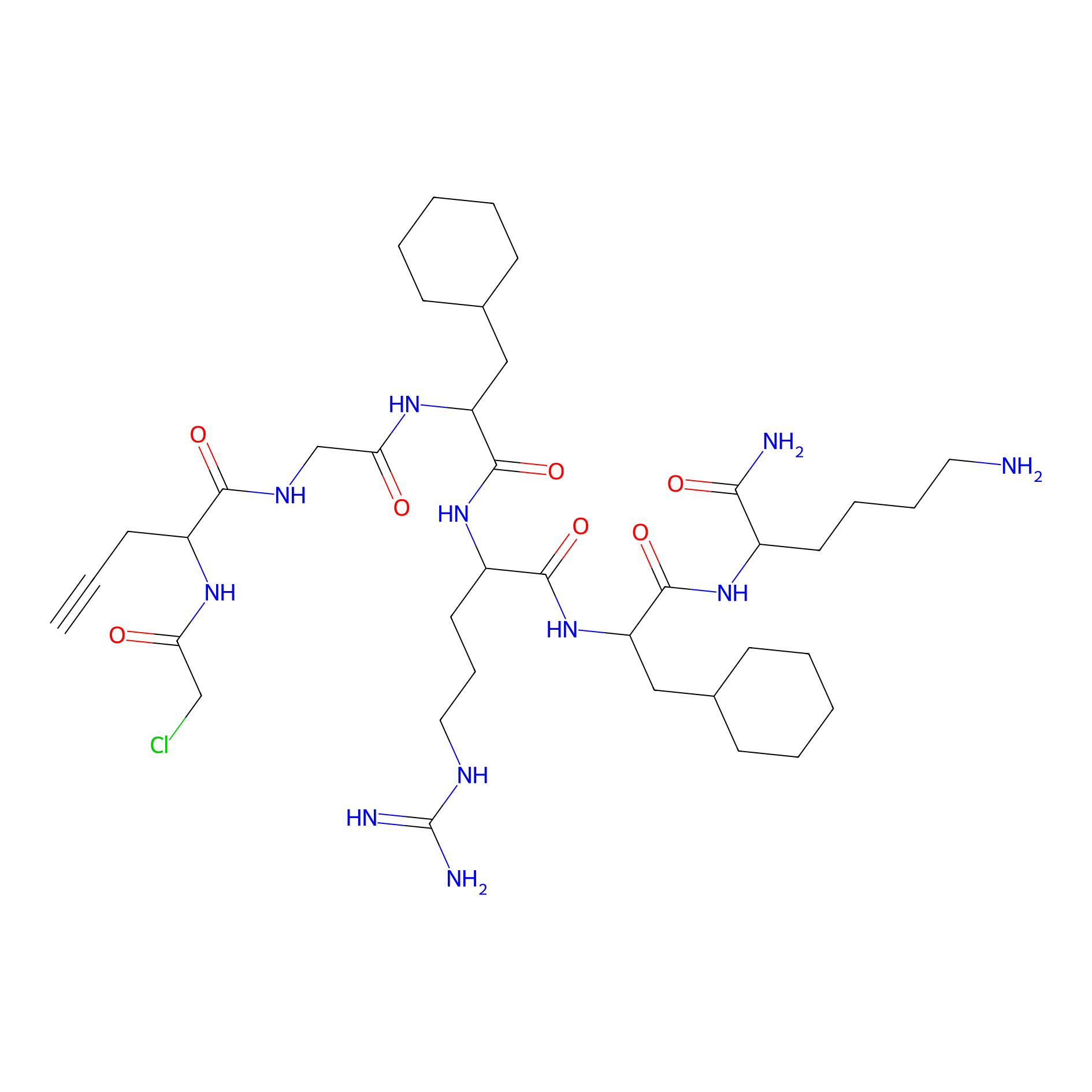 |
N.A. | LDD0428 | [24] | |
|
NAIA_5 Probe Info |
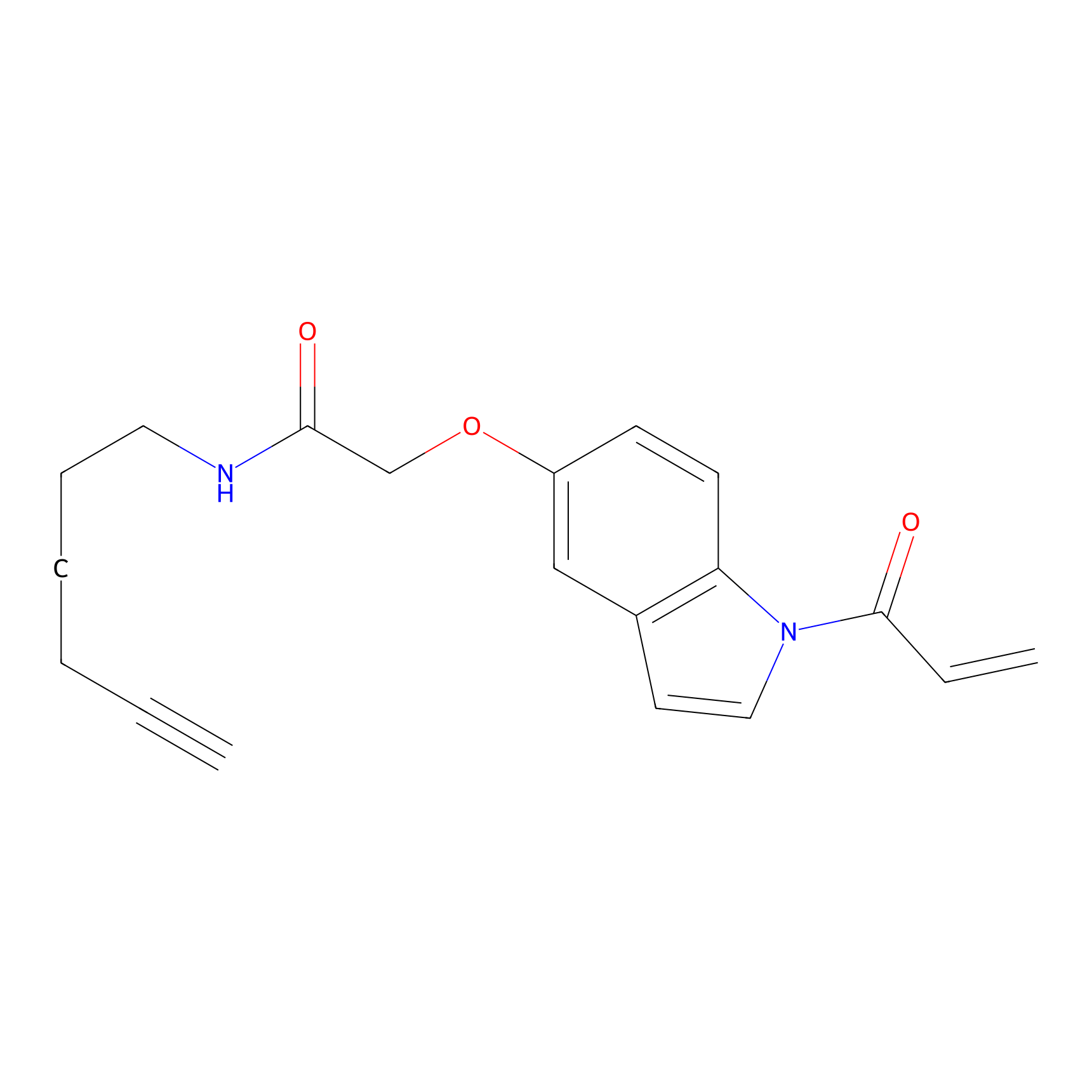 |
N.A. | LDD2223 | [25] | |
|
TER-AC Probe Info |
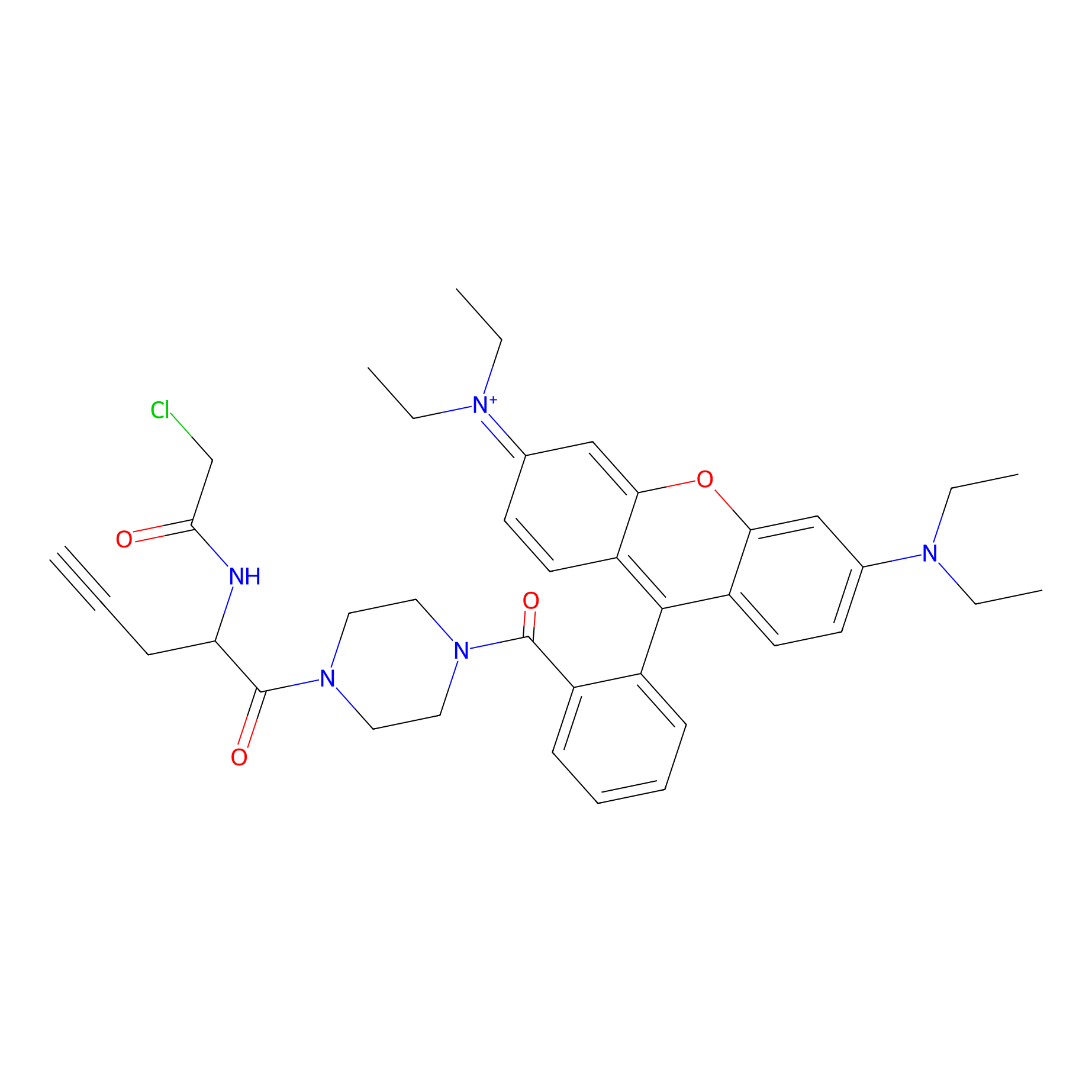 |
N.A. | LDD0426 | [24] | |
PAL-AfBPP Probe
| Probe name | Structure | Binding Site(Ratio) | Interaction ID | Ref | |
|---|---|---|---|---|---|
|
FFF probe11 Probe Info |
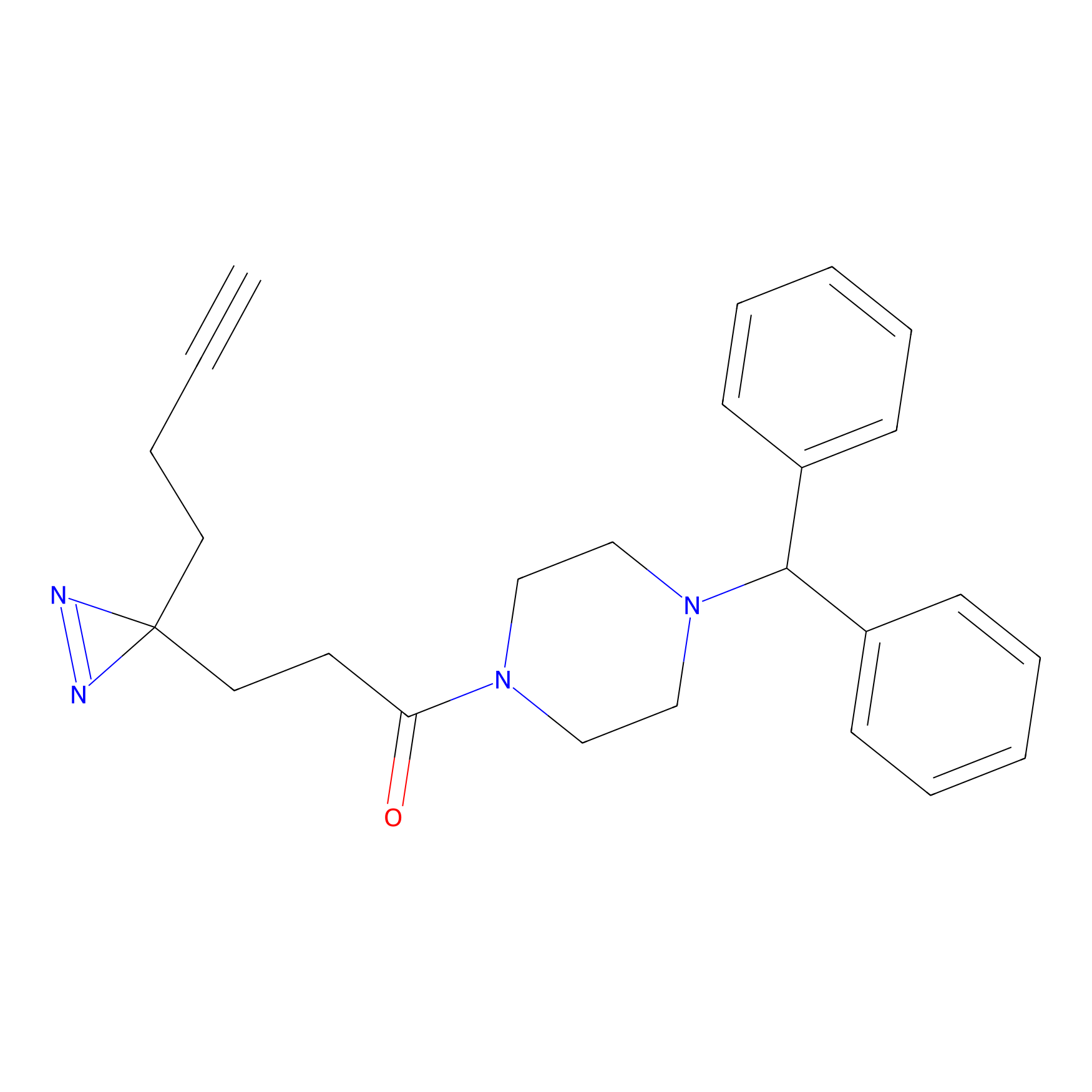 |
7.13 | LDD0472 | [26] | |
|
FFF probe13 Probe Info |
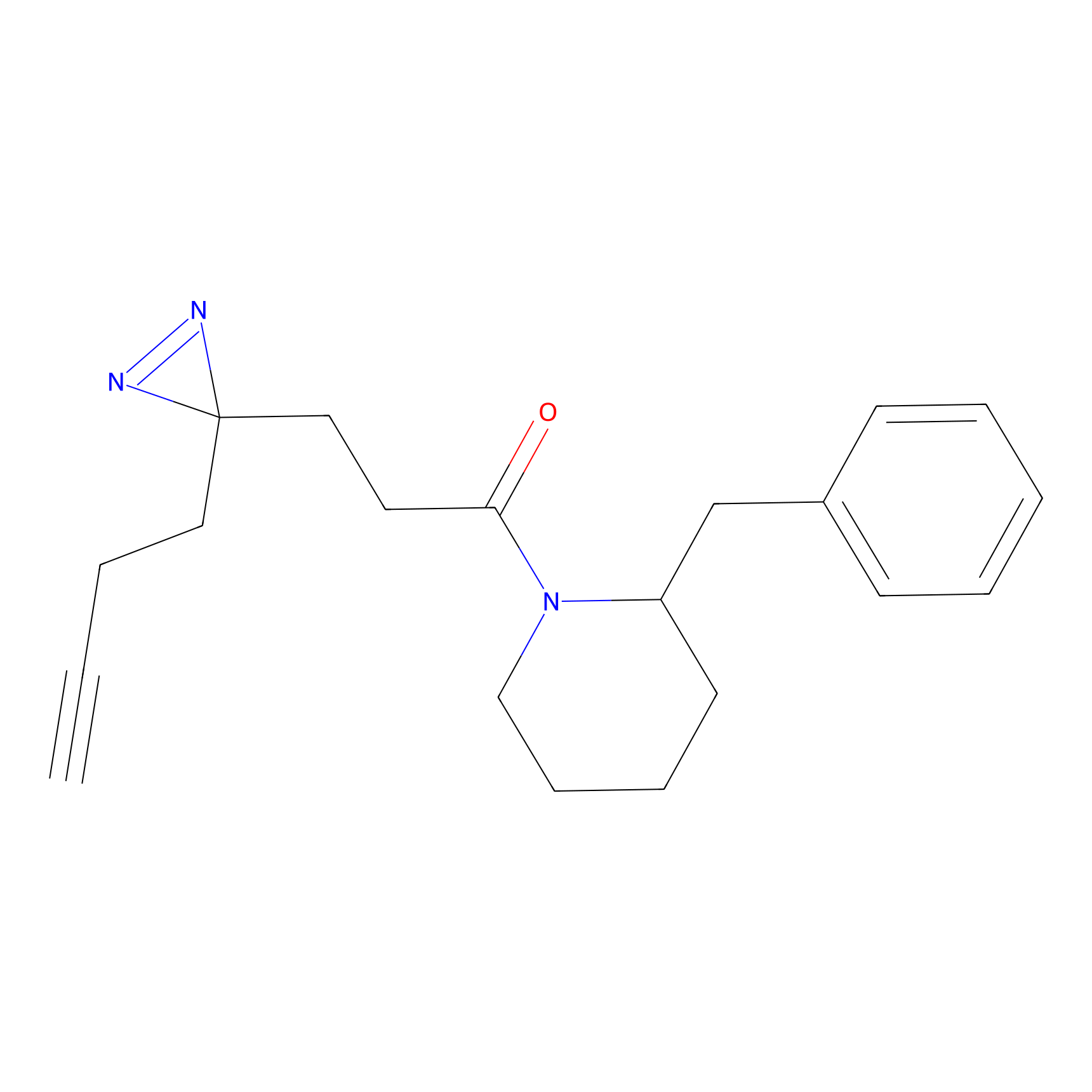 |
12.72 | LDD0475 | [26] | |
|
FFF probe2 Probe Info |
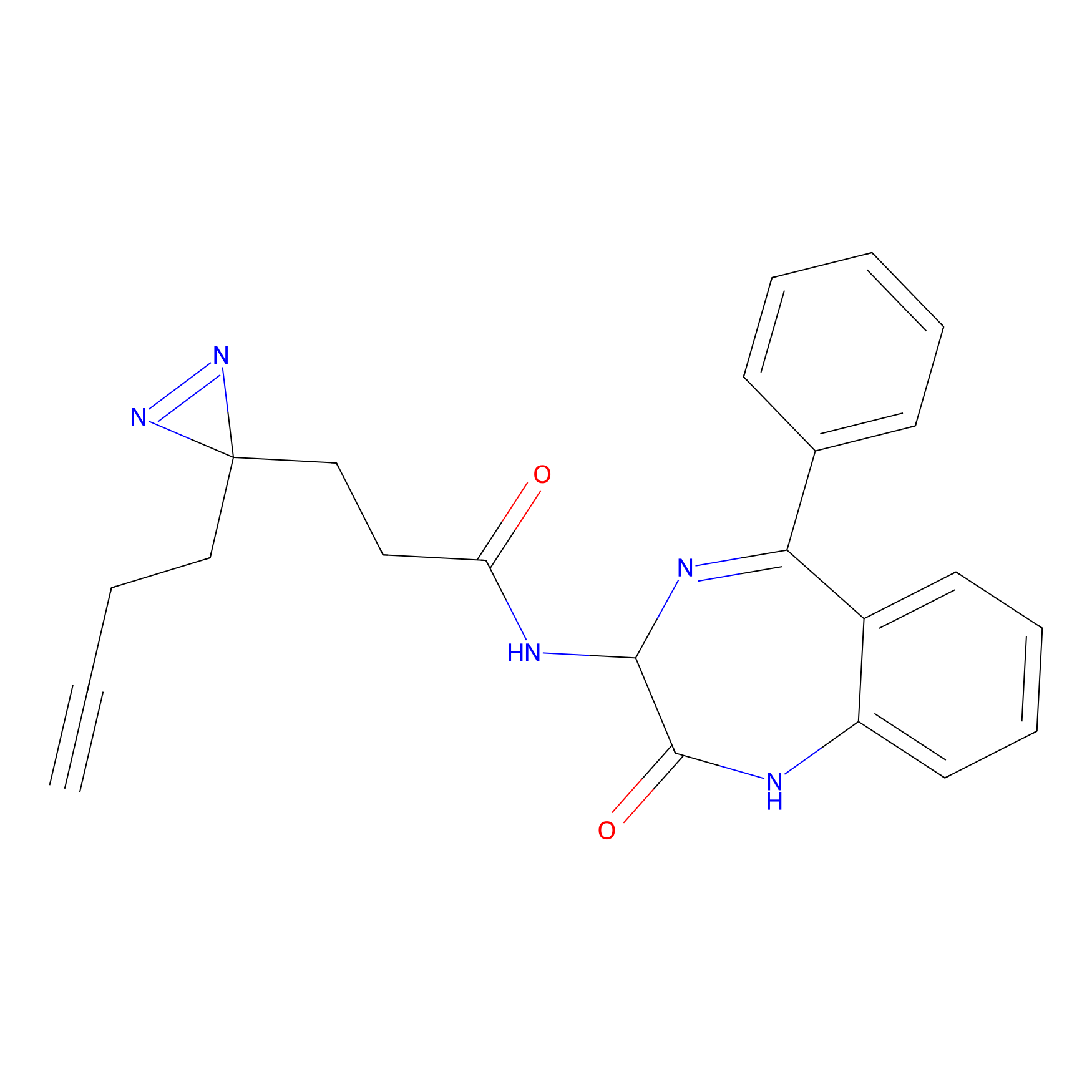 |
6.06 | LDD0463 | [26] | |
|
FFF probe3 Probe Info |
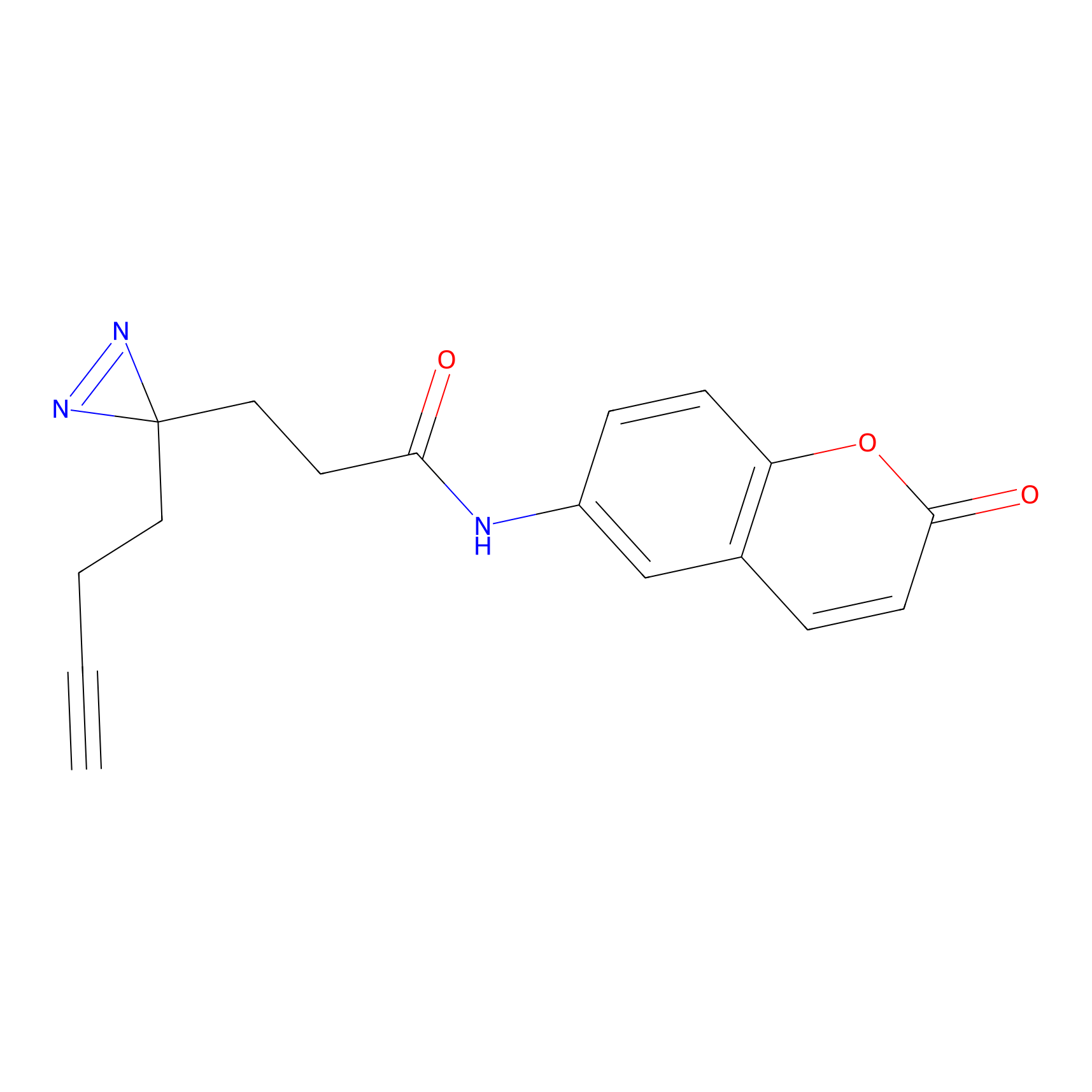 |
5.28 | LDD0464 | [26] | |
|
FFF probe4 Probe Info |
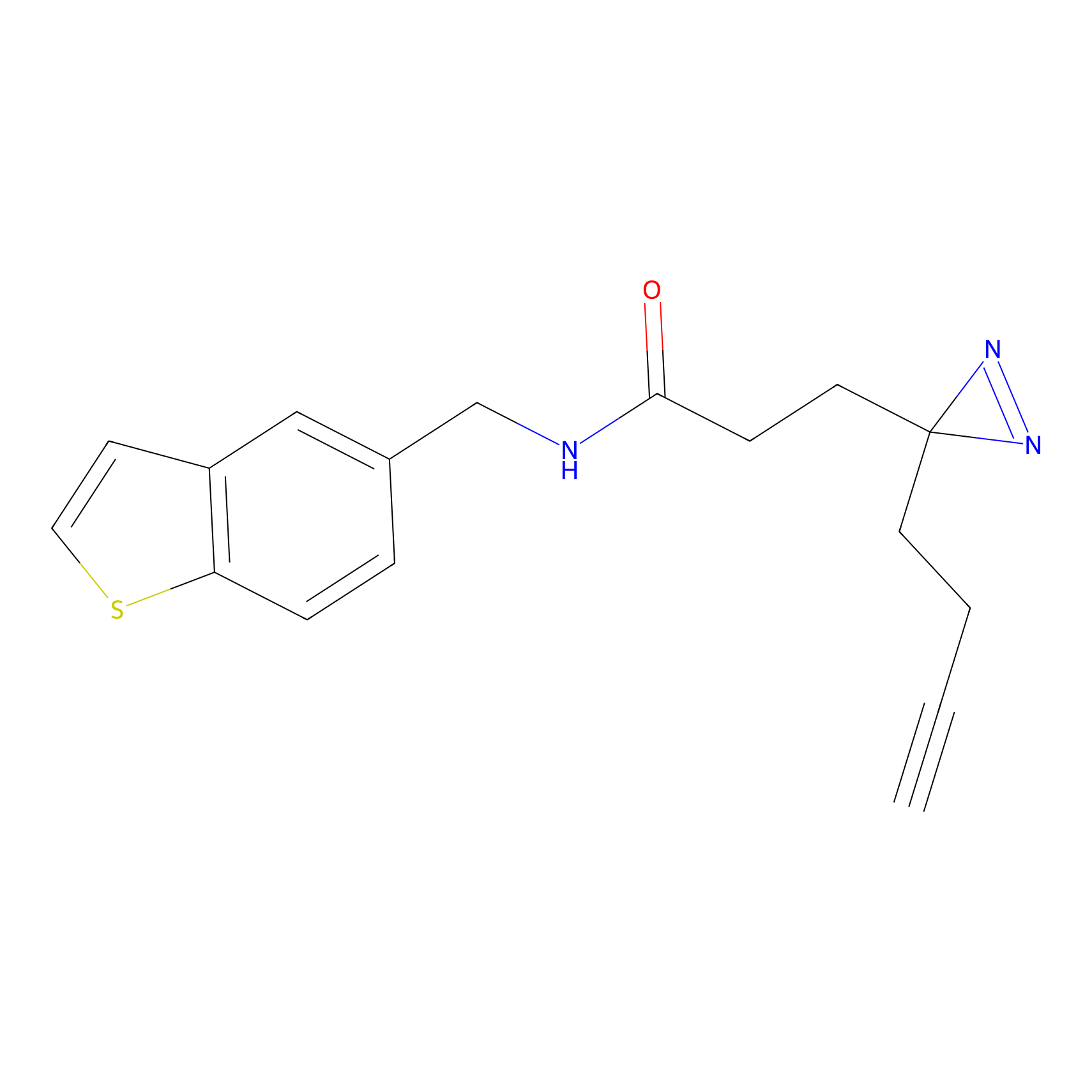 |
7.79 | LDD0466 | [26] | |
|
STS-2 Probe Info |
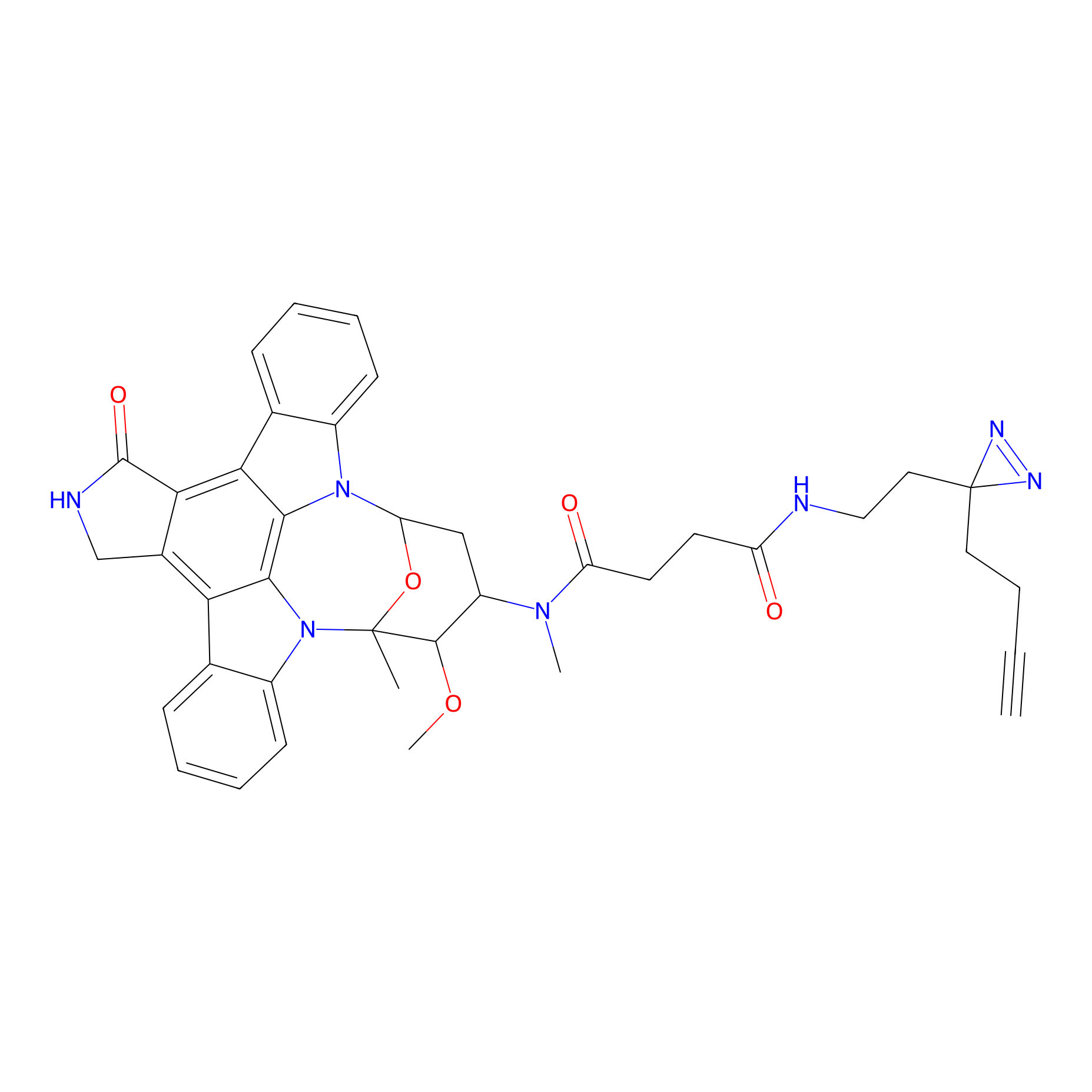 |
1.53 | LDD0139 | [27] | |
|
VE-P Probe Info |
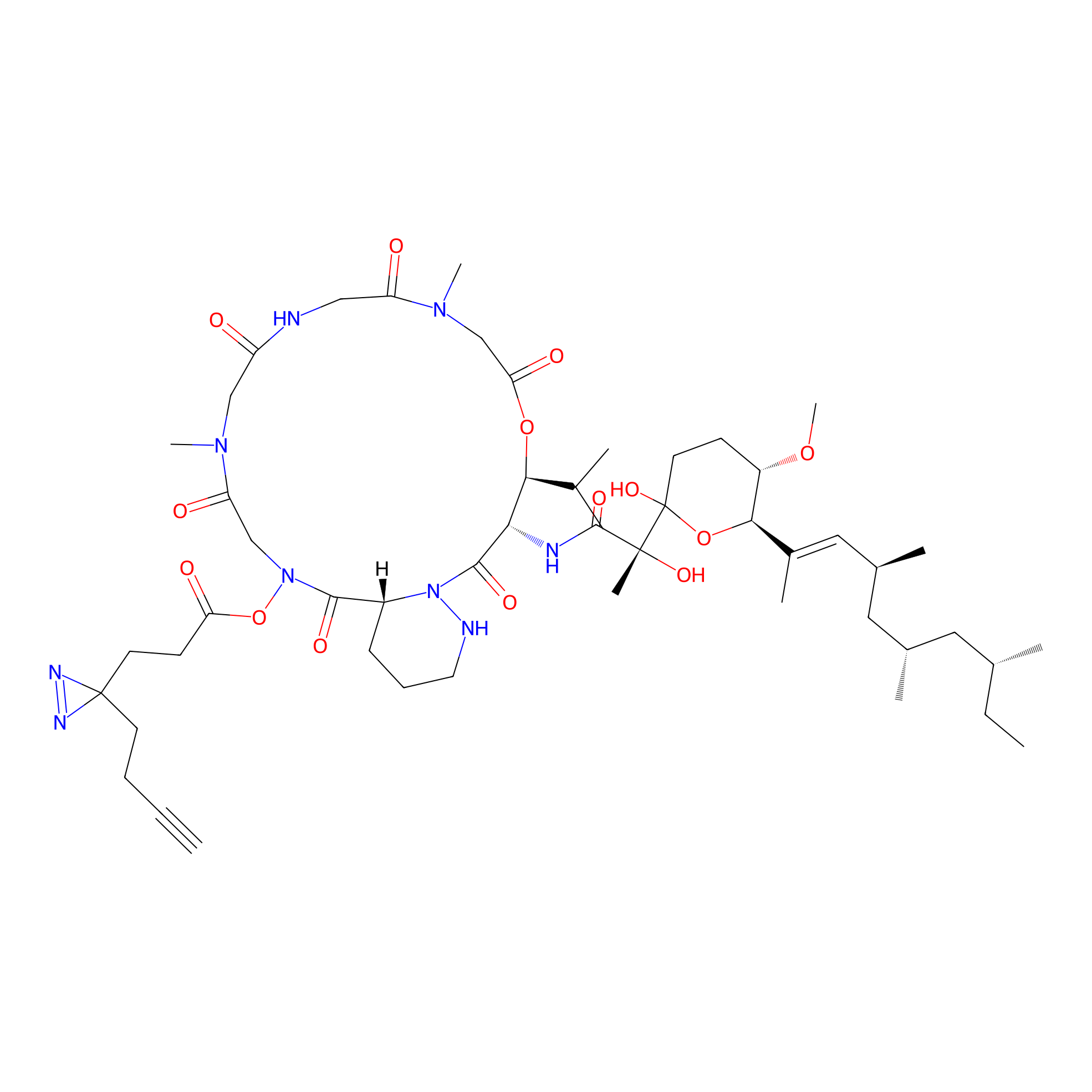 |
N.A. | LDD0396 | [28] | |
|
DA-2 Probe Info |
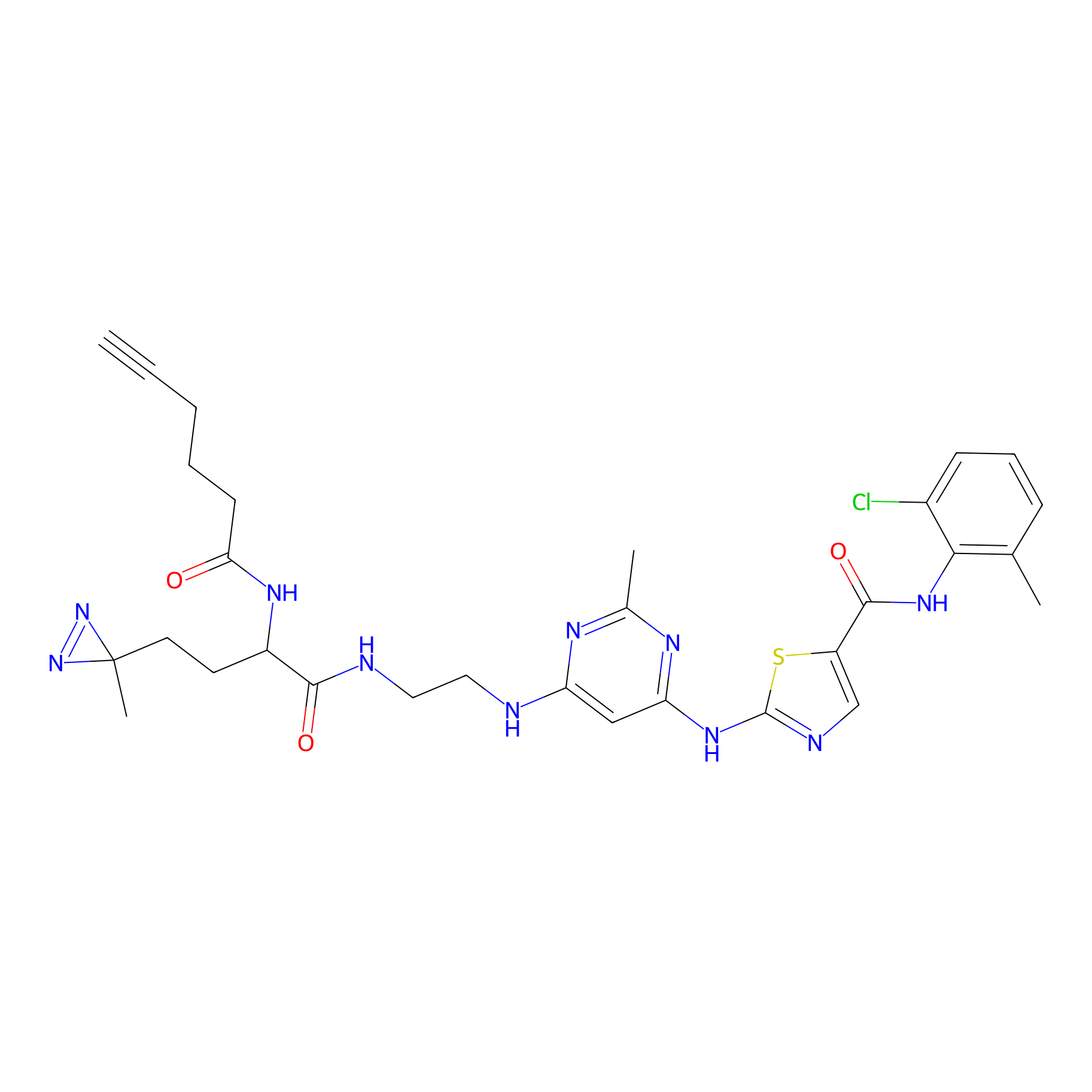 |
N.A. | LDD0070 | [29] | |
|
OEA-DA Probe Info |
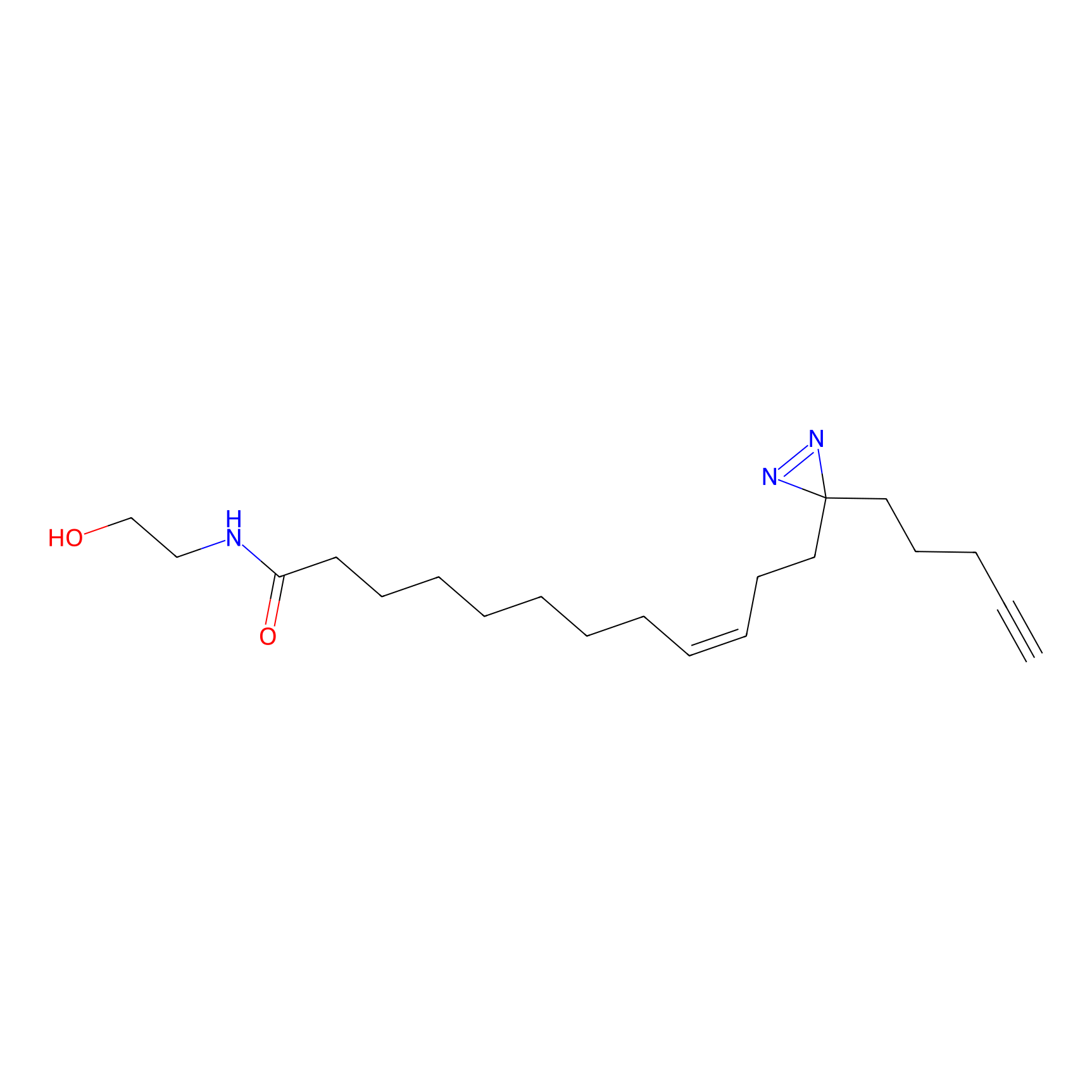 |
3.74 | LDD0046 | [30] | |
Competitor(s) Related to This Target
| Competitor ID | Name | Cell line | Binding Site(Ratio) | Interaction ID | Ref |
|---|---|---|---|---|---|
| LDCM0548 | 1-(4-(Benzo[d][1,3]dioxol-5-ylmethyl)piperazin-1-yl)-2-nitroethan-1-one | MDA-MB-231 | C284(0.50) | LDD2142 | [8] |
| LDCM0519 | 1-(6-methoxy-3,4-dihydroquinolin-1(2H)-yl)-2-nitroethan-1-one | MDA-MB-231 | C284(0.71) | LDD2112 | [8] |
| LDCM0502 | 1-(Cyanoacetyl)piperidine | MDA-MB-231 | C284(0.58) | LDD2095 | [8] |
| LDCM0537 | 2-Cyano-N,N-dimethylacetamide | MDA-MB-231 | C284(0.85) | LDD2130 | [8] |
| LDCM0524 | 2-Cyano-N-(2-morpholin-4-yl-ethyl)-acetamide | MDA-MB-231 | C284(0.69) | LDD2117 | [8] |
| LDCM0558 | 2-Cyano-N-phenylacetamide | MDA-MB-231 | C284(1.21) | LDD2152 | [8] |
| LDCM0539 | 3-(4-Isopropylpiperazin-1-yl)-3-oxopropanenitrile | MDA-MB-231 | C284(0.45) | LDD2132 | [8] |
| LDCM0538 | 4-(Cyanoacetyl)morpholine | MDA-MB-231 | C284(0.60) | LDD2131 | [8] |
| LDCM0545 | Acetamide | MDA-MB-231 | C284(0.25) | LDD2138 | [8] |
| LDCM0156 | Aniline | NCI-H1299 | 12.65 | LDD0403 | [1] |
| LDCM0498 | BS-3668 | MDA-MB-231 | C284(0.34) | LDD2091 | [8] |
| LDCM0108 | Chloroacetamide | HeLa | H213(0.00); H212(0.00) | LDD0222 | [12] |
| LDCM0632 | CL-Sc | Hep-G2 | C284(2.82); C13(1.61); C13(1.26) | LDD2227 | [25] |
| LDCM0634 | CY-0357 | Hep-G2 | C13(0.86) | LDD2228 | [25] |
| LDCM0175 | Ethacrynic acid | HeLa | N.A. | LDD0440 | [9] |
| LDCM0107 | IAA | HeLa | H213(0.00); H212(0.00) | LDD0221 | [12] |
| LDCM0129 | JWB202 | DM93 | Y200(0.16) | LDD0291 | [10] |
| LDCM0509 | N-(4-bromo-3,5-dimethylphenyl)-2-nitroacetamide | MDA-MB-231 | C284(1.14) | LDD2102 | [8] |
| LDCM0109 | NEM | HeLa | H201(0.00); H213(0.00); H212(0.00) | LDD0223 | [12] |
| LDCM0496 | Nucleophilic fragment 11a | MDA-MB-231 | C284(0.43) | LDD2089 | [8] |
| LDCM0497 | Nucleophilic fragment 11b | MDA-MB-231 | C284(0.92) | LDD2090 | [8] |
| LDCM0499 | Nucleophilic fragment 12b | MDA-MB-231 | C284(1.12) | LDD2092 | [8] |
| LDCM0500 | Nucleophilic fragment 13a | MDA-MB-231 | C284(0.95) | LDD2093 | [8] |
| LDCM0501 | Nucleophilic fragment 13b | MDA-MB-231 | C284(1.58) | LDD2094 | [8] |
| LDCM0503 | Nucleophilic fragment 14b | MDA-MB-231 | C284(0.38) | LDD2096 | [8] |
| LDCM0504 | Nucleophilic fragment 15a | MDA-MB-231 | C284(0.56) | LDD2097 | [8] |
| LDCM0505 | Nucleophilic fragment 15b | MDA-MB-231 | C284(0.78) | LDD2098 | [8] |
| LDCM0506 | Nucleophilic fragment 16a | MDA-MB-231 | C284(0.62) | LDD2099 | [8] |
| LDCM0507 | Nucleophilic fragment 16b | MDA-MB-231 | C284(0.48) | LDD2100 | [8] |
| LDCM0508 | Nucleophilic fragment 17a | MDA-MB-231 | C284(0.94) | LDD2101 | [8] |
| LDCM0511 | Nucleophilic fragment 18b | MDA-MB-231 | C284(0.53) | LDD2104 | [8] |
| LDCM0512 | Nucleophilic fragment 19a | MDA-MB-231 | C284(1.84) | LDD2105 | [8] |
| LDCM0513 | Nucleophilic fragment 19b | MDA-MB-231 | C284(0.34) | LDD2106 | [8] |
| LDCM0514 | Nucleophilic fragment 20a | MDA-MB-231 | C284(0.78) | LDD2107 | [8] |
| LDCM0515 | Nucleophilic fragment 20b | MDA-MB-231 | C284(0.64) | LDD2108 | [8] |
| LDCM0517 | Nucleophilic fragment 21b | MDA-MB-231 | C284(0.94) | LDD2110 | [8] |
| LDCM0518 | Nucleophilic fragment 22a | MDA-MB-231 | C284(0.72) | LDD2111 | [8] |
| LDCM0521 | Nucleophilic fragment 23b | MDA-MB-231 | C284(0.53) | LDD2114 | [8] |
| LDCM0523 | Nucleophilic fragment 24b | MDA-MB-231 | C284(0.62) | LDD2116 | [8] |
| LDCM0525 | Nucleophilic fragment 25b | MDA-MB-231 | C284(0.57) | LDD2118 | [8] |
| LDCM0526 | Nucleophilic fragment 26a | MDA-MB-231 | C284(2.74) | LDD2119 | [8] |
| LDCM0529 | Nucleophilic fragment 27b | MDA-MB-231 | C284(0.49) | LDD2122 | [8] |
| LDCM0531 | Nucleophilic fragment 28b | MDA-MB-231 | C284(0.53) | LDD2124 | [8] |
| LDCM0532 | Nucleophilic fragment 29a | MDA-MB-231 | C284(0.57) | LDD2125 | [8] |
| LDCM0533 | Nucleophilic fragment 29b | MDA-MB-231 | C284(1.16) | LDD2126 | [8] |
| LDCM0536 | Nucleophilic fragment 31 | MDA-MB-231 | C284(0.99) | LDD2129 | [8] |
| LDCM0542 | Nucleophilic fragment 37 | MDA-MB-231 | C284(0.97) | LDD2135 | [8] |
| LDCM0543 | Nucleophilic fragment 38 | MDA-MB-231 | C284(0.83) | LDD2136 | [8] |
| LDCM0211 | Nucleophilic fragment 3b | MDA-MB-231 | C284(1.30) | LDD1700 | [8] |
| LDCM0547 | Nucleophilic fragment 41 | MDA-MB-231 | C284(0.42) | LDD2141 | [8] |
| LDCM0550 | Nucleophilic fragment 5a | MDA-MB-231 | C284(3.02) | LDD2144 | [8] |
| LDCM0552 | Nucleophilic fragment 6a | MDA-MB-231 | C284(0.63) | LDD2146 | [8] |
| LDCM0554 | Nucleophilic fragment 7a | MDA-MB-231 | C284(0.65) | LDD2148 | [8] |
| LDCM0555 | Nucleophilic fragment 7b | MDA-MB-231 | C284(0.75) | LDD2149 | [8] |
| LDCM0557 | Nucleophilic fragment 8b | MDA-MB-231 | C284(0.65) | LDD2151 | [8] |
| LDCM0627 | NUDT7-COV-1 | HEK-293T | C13(1.20) | LDD2206 | [31] |
| LDCM0628 | OTUB2-COV-1 | HEK-293T | C13(0.71) | LDD2207 | [31] |
The Interaction Atlas With This Target
References
